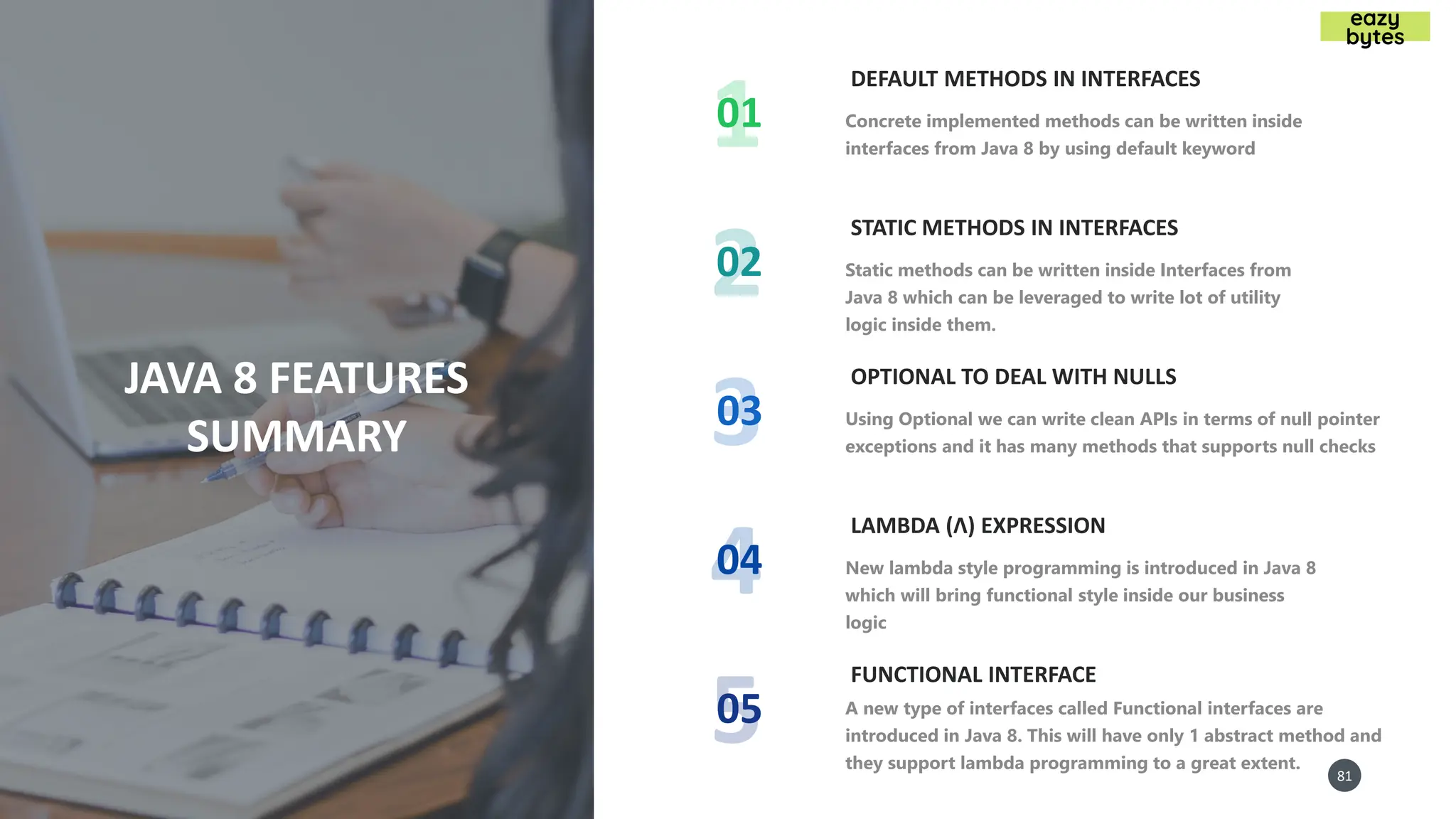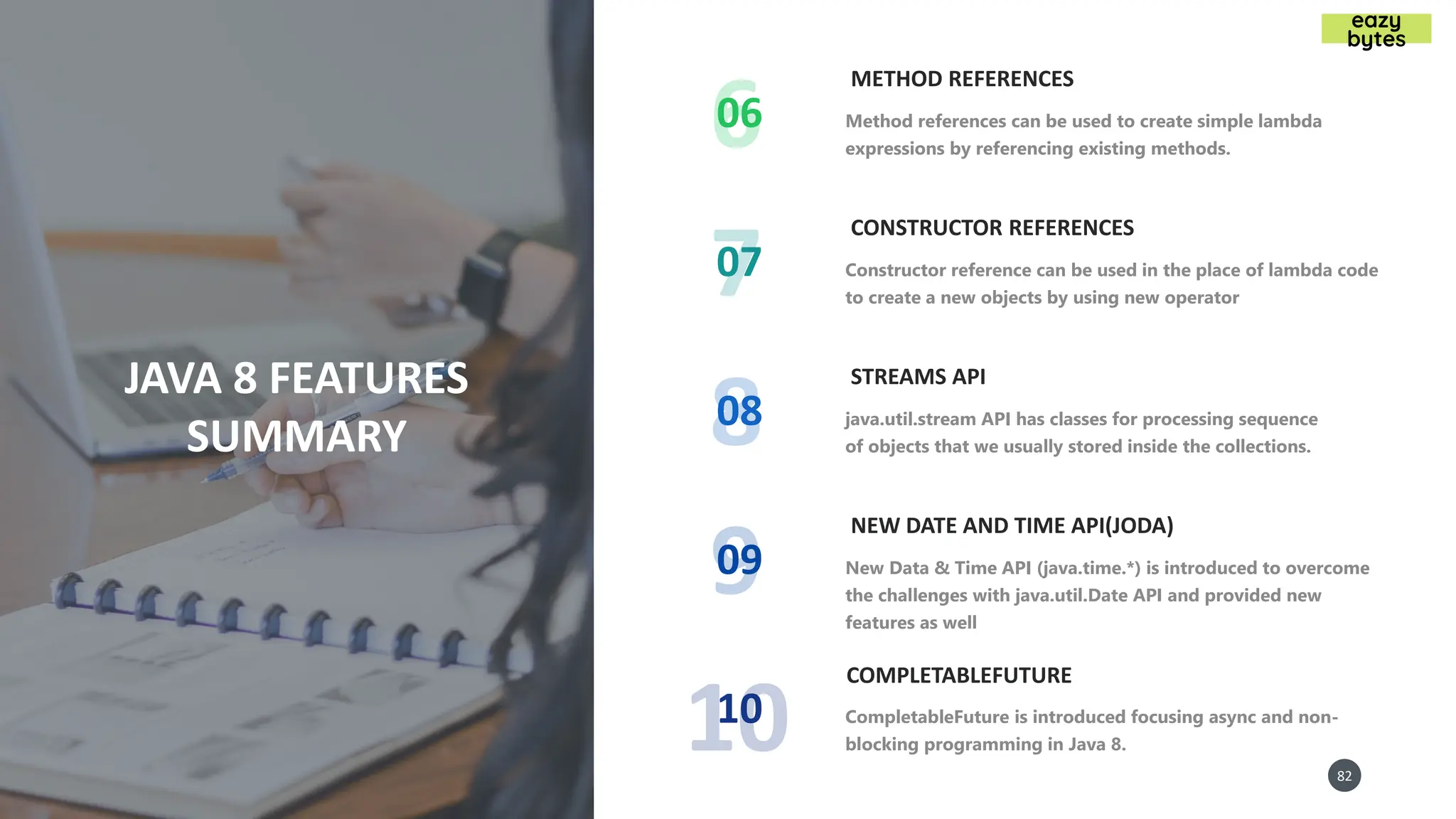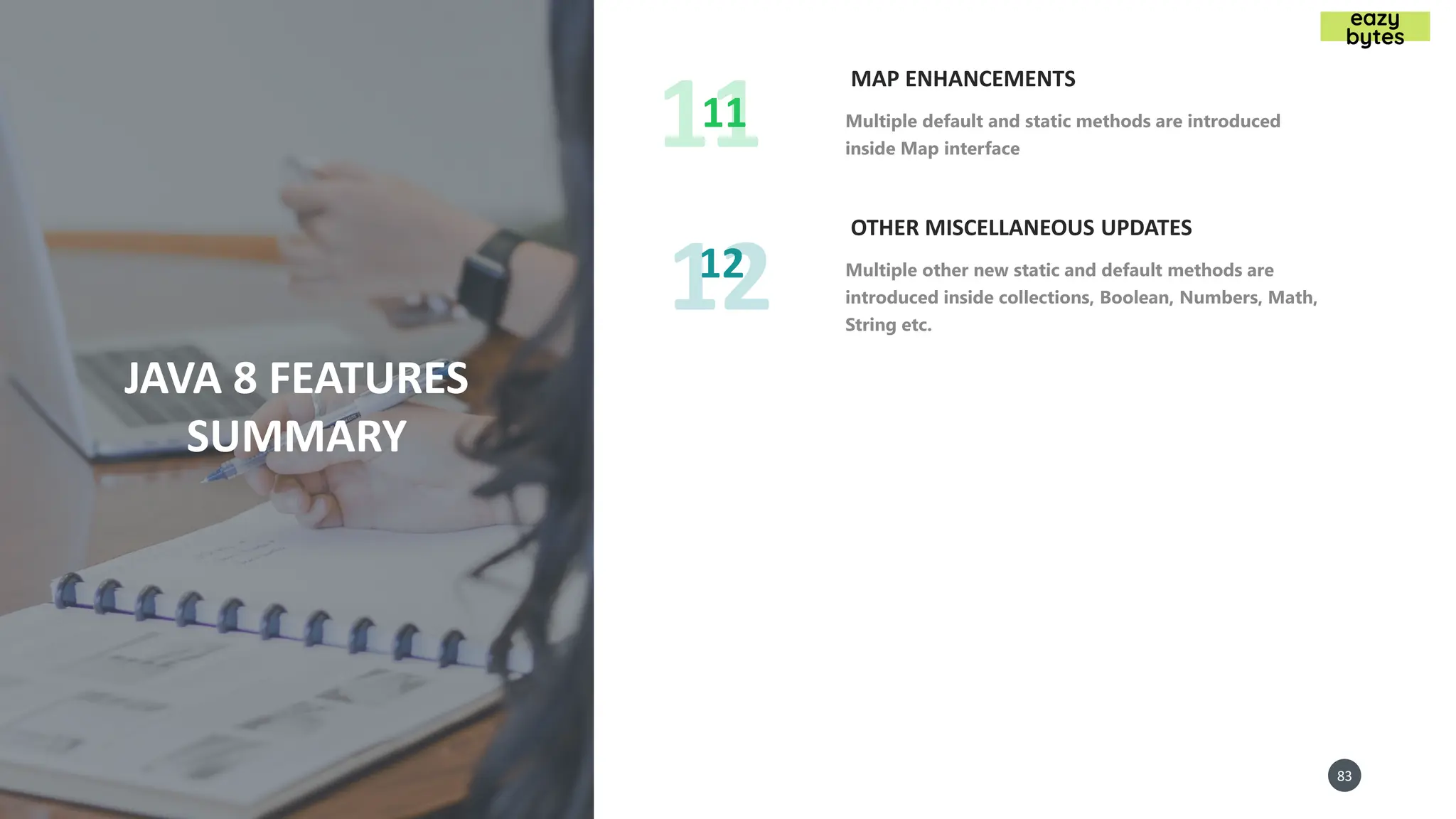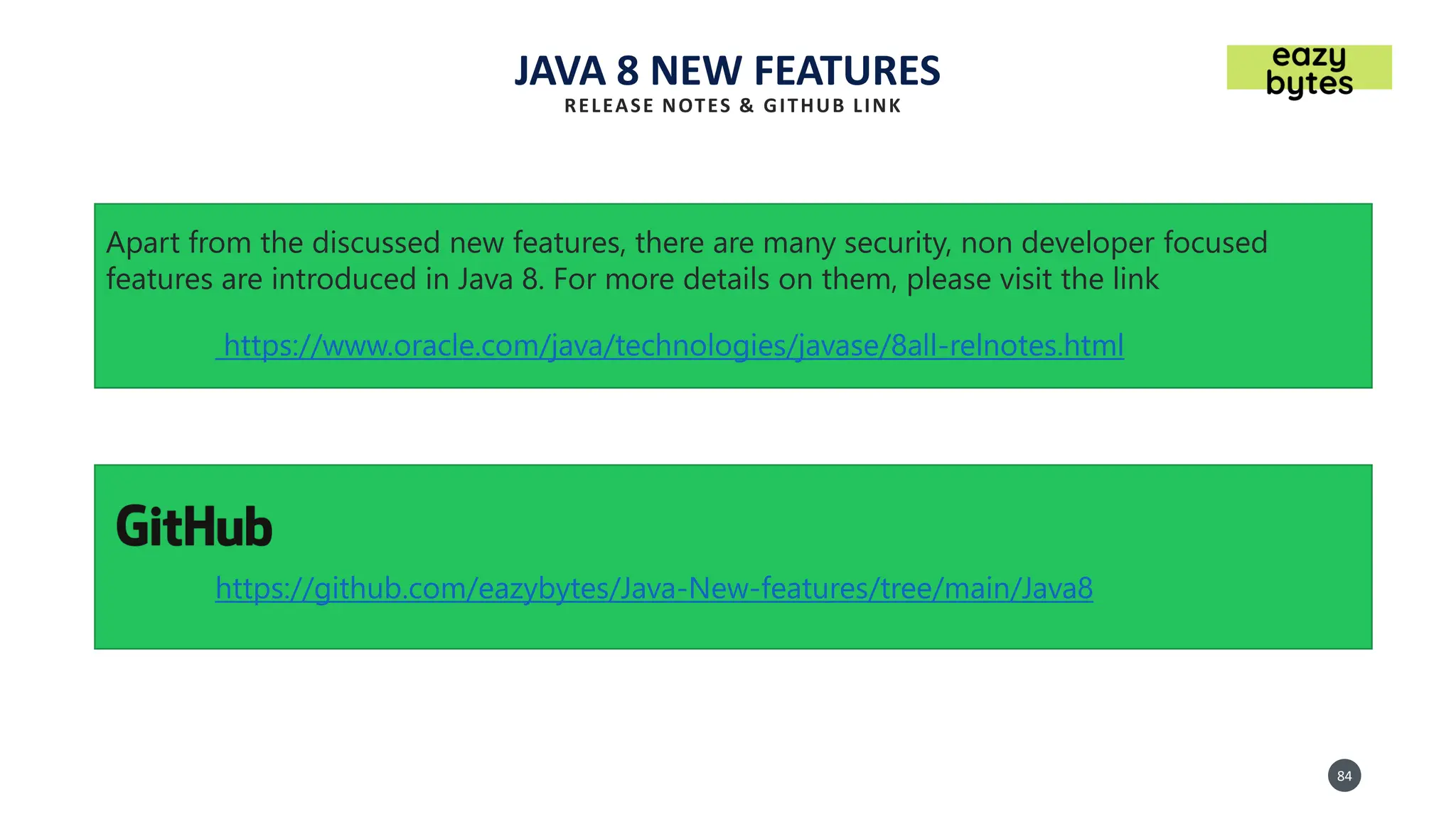This document discusses new features introduced in Java 8, including default methods in interfaces, static methods in interfaces, the Optional class for dealing with null values, and lambda expressions. Default methods allow interfaces to provide implementation code while maintaining backwards compatibility. Static methods in interfaces allow grouping of utility methods without utility classes. The Optional class avoids null pointer exceptions by allowing values to be absent. Lambda expressions allow treating functionality as a method argument or code as data, bringing benefits of functional programming to Java.
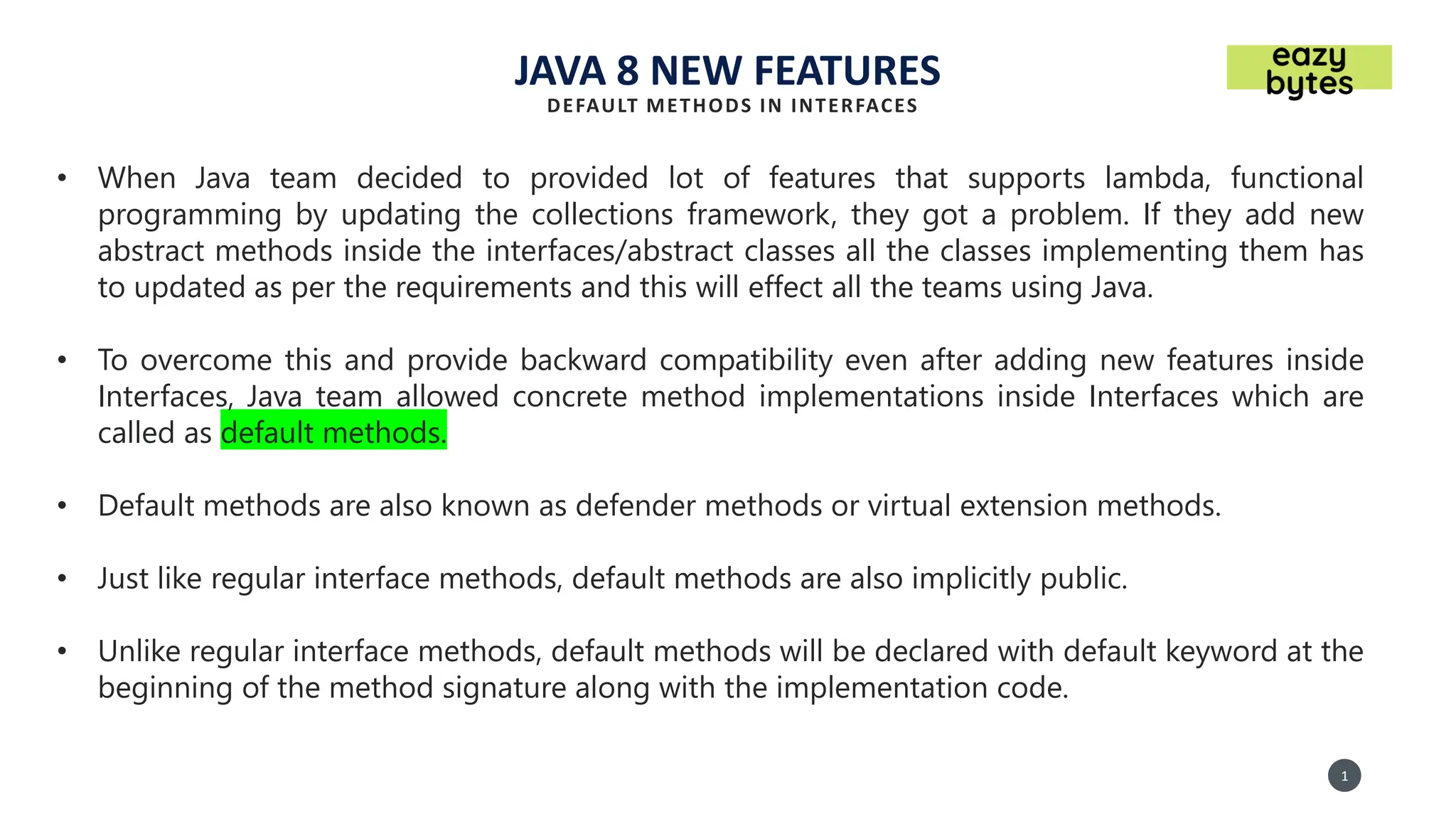
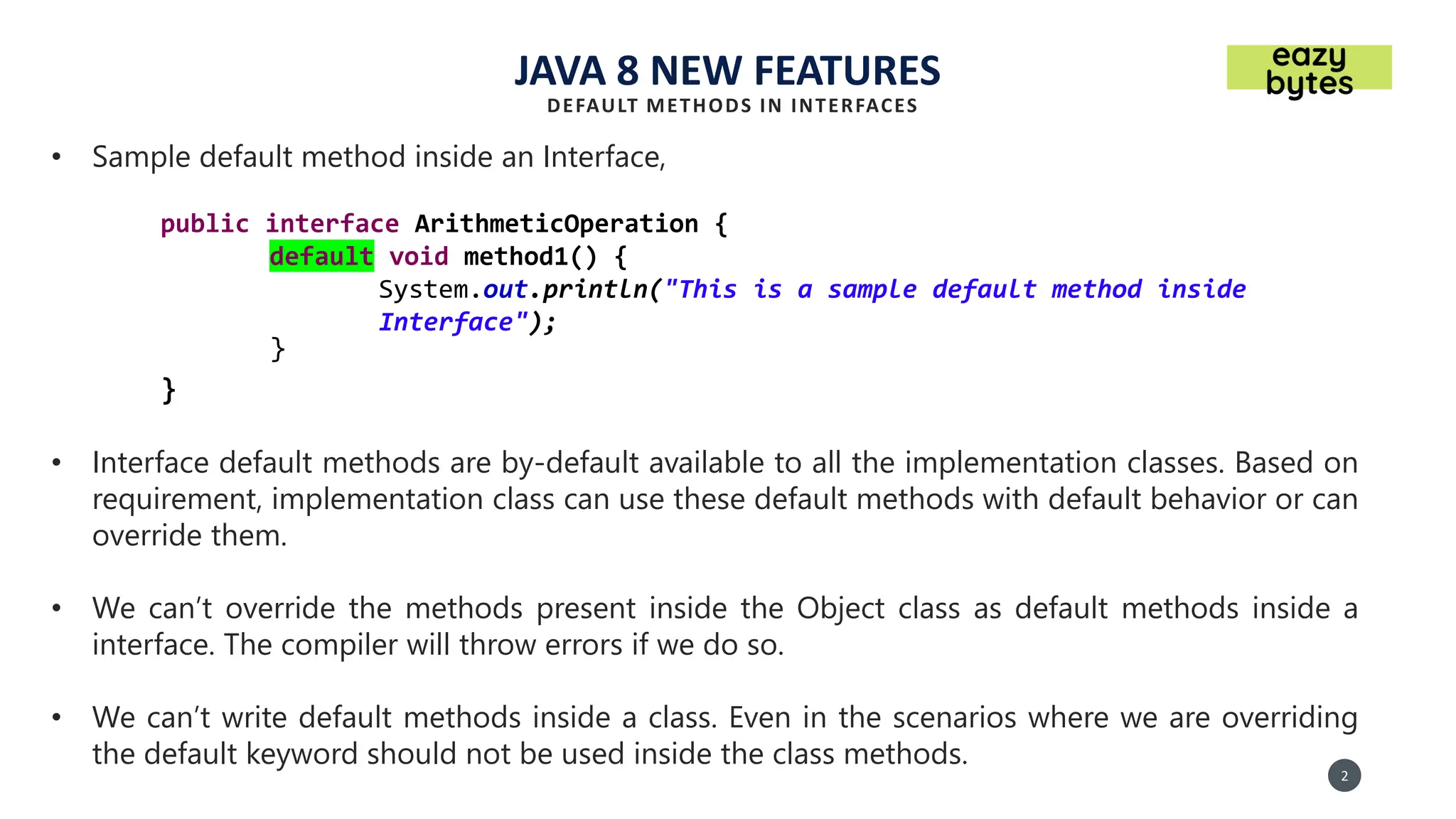
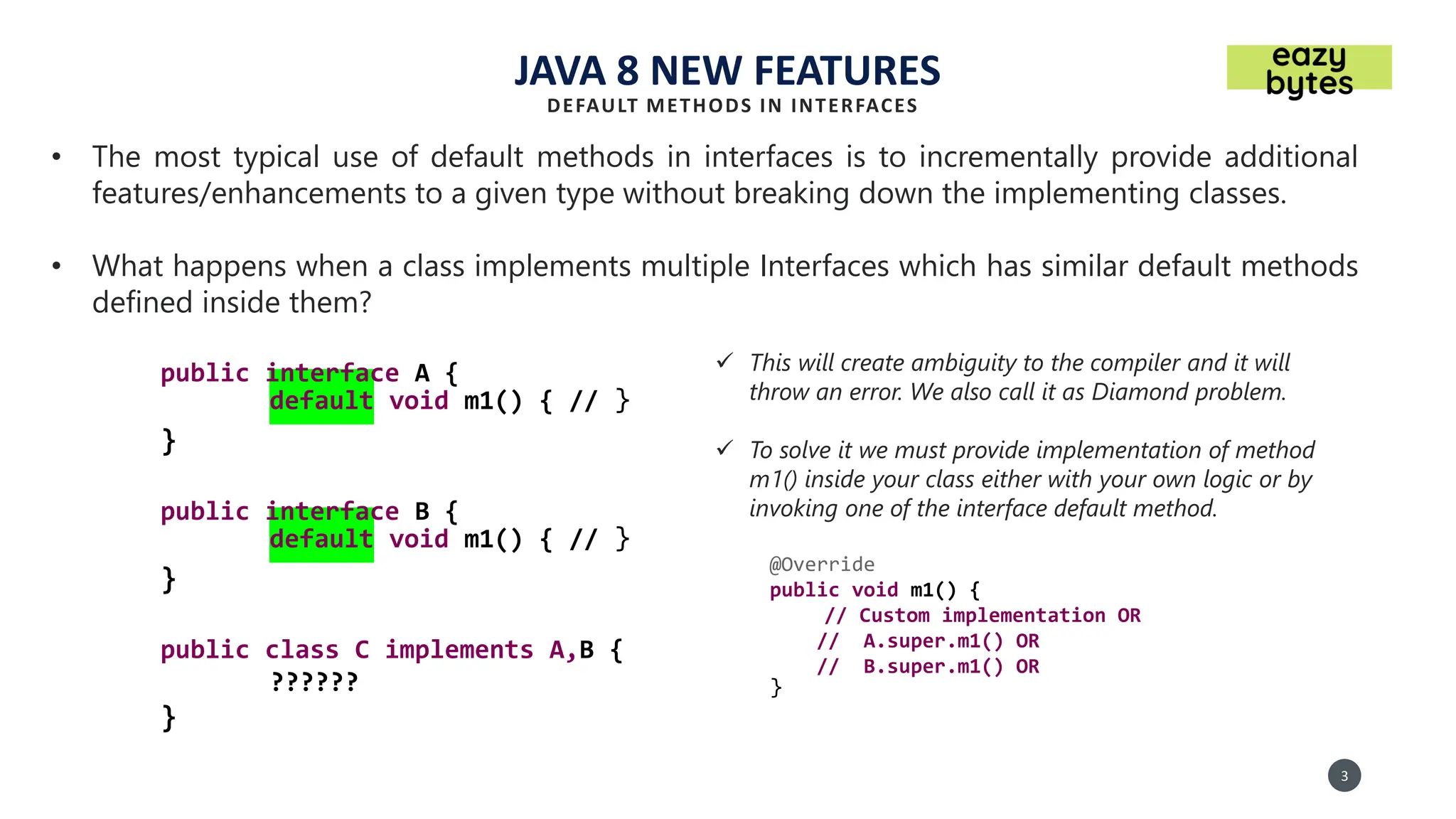


![6
6
JAVA 8 NEW FEATURES
STATIC METHODS IN INTERFACES
public interface A {
public static void sayHello() {
System.out.println("Hi, This is a static method inside Interfaces");
}
}
public class B implements A {
private static void sayHello() {
System.out.println("Hi, This is a static method inside class");
}
public static void main(String[] args) {
B b = new B();
b.sayHello();
B.sayHello();
A.sayHello();
}
}
✓ Since static methods are allowed from Java 8, we
can write a main method inside an interface and
execute it as well.](https://image.slidesharecdn.com/java8-newfeatures-231026104942-a528e6a8/75/Java-8-New-Features-pdf-6-2048.jpg)

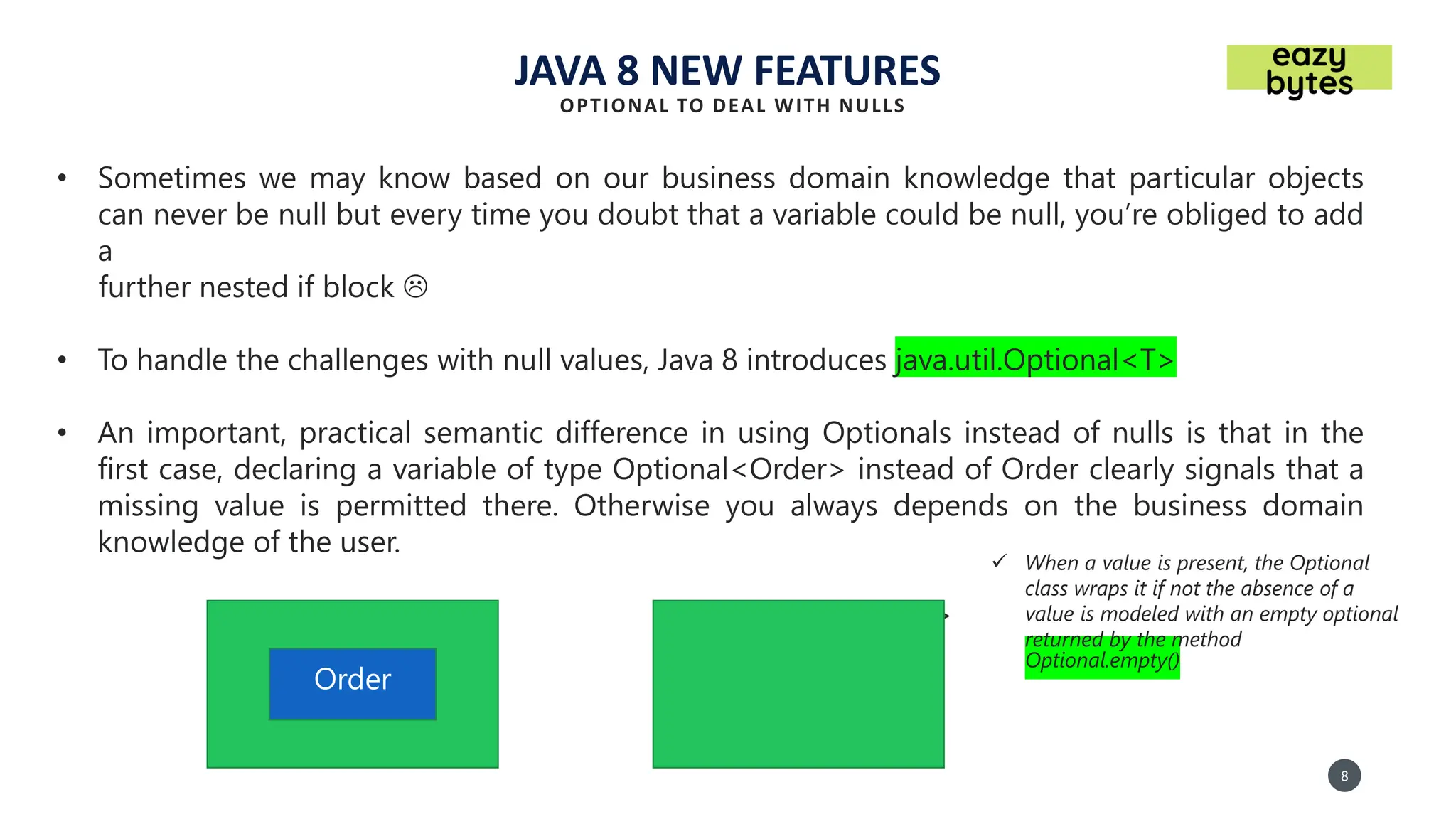
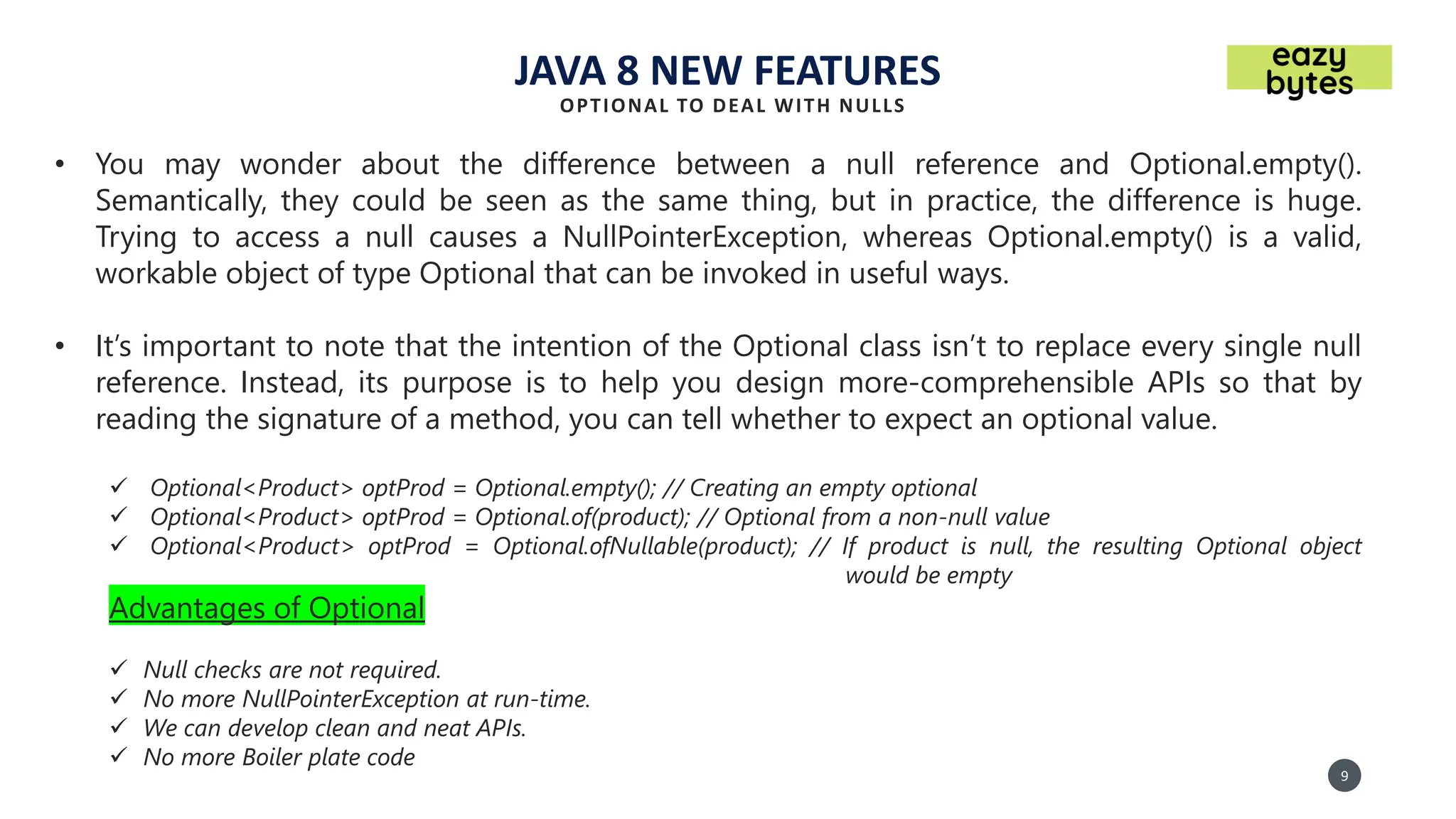
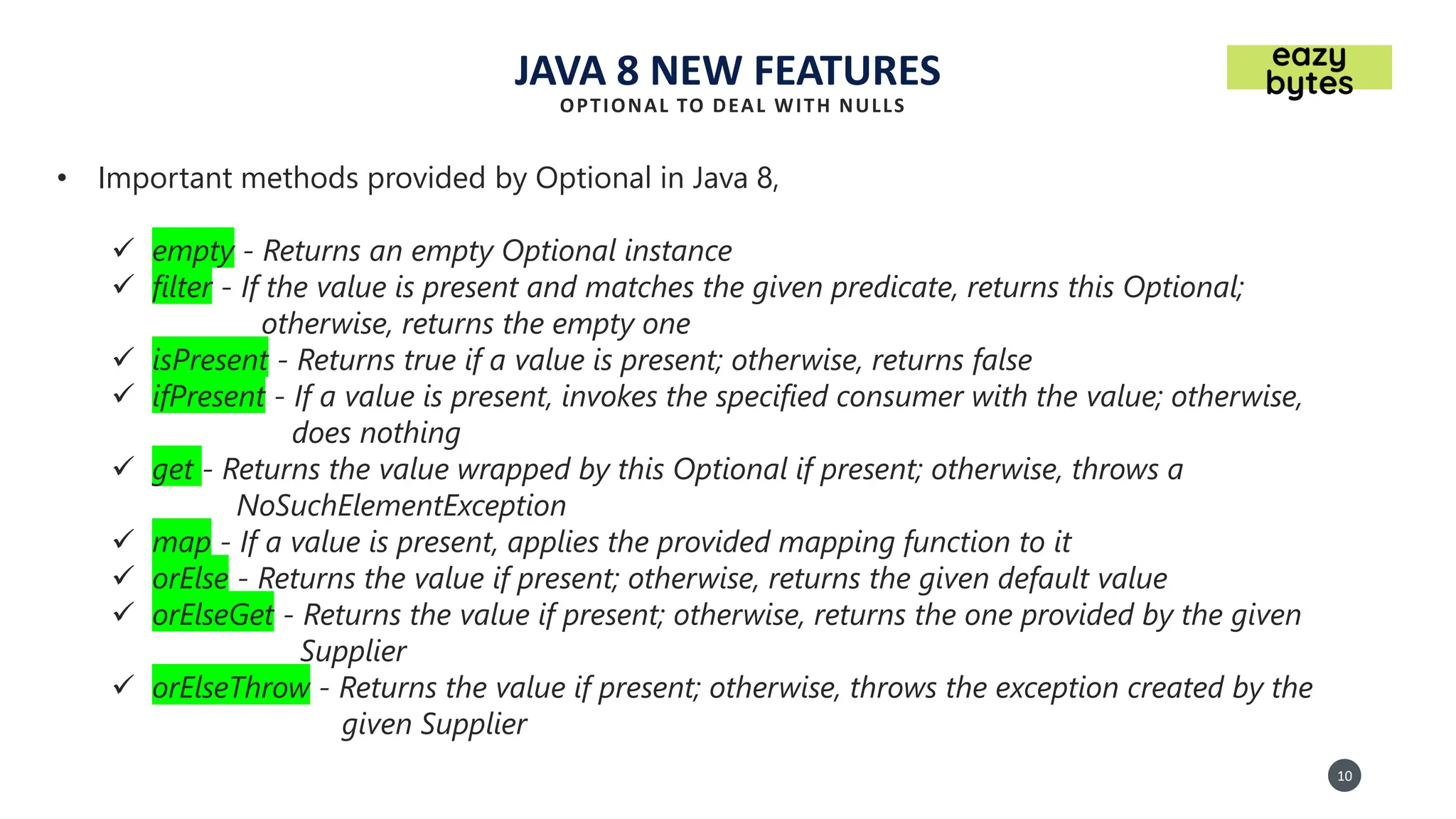
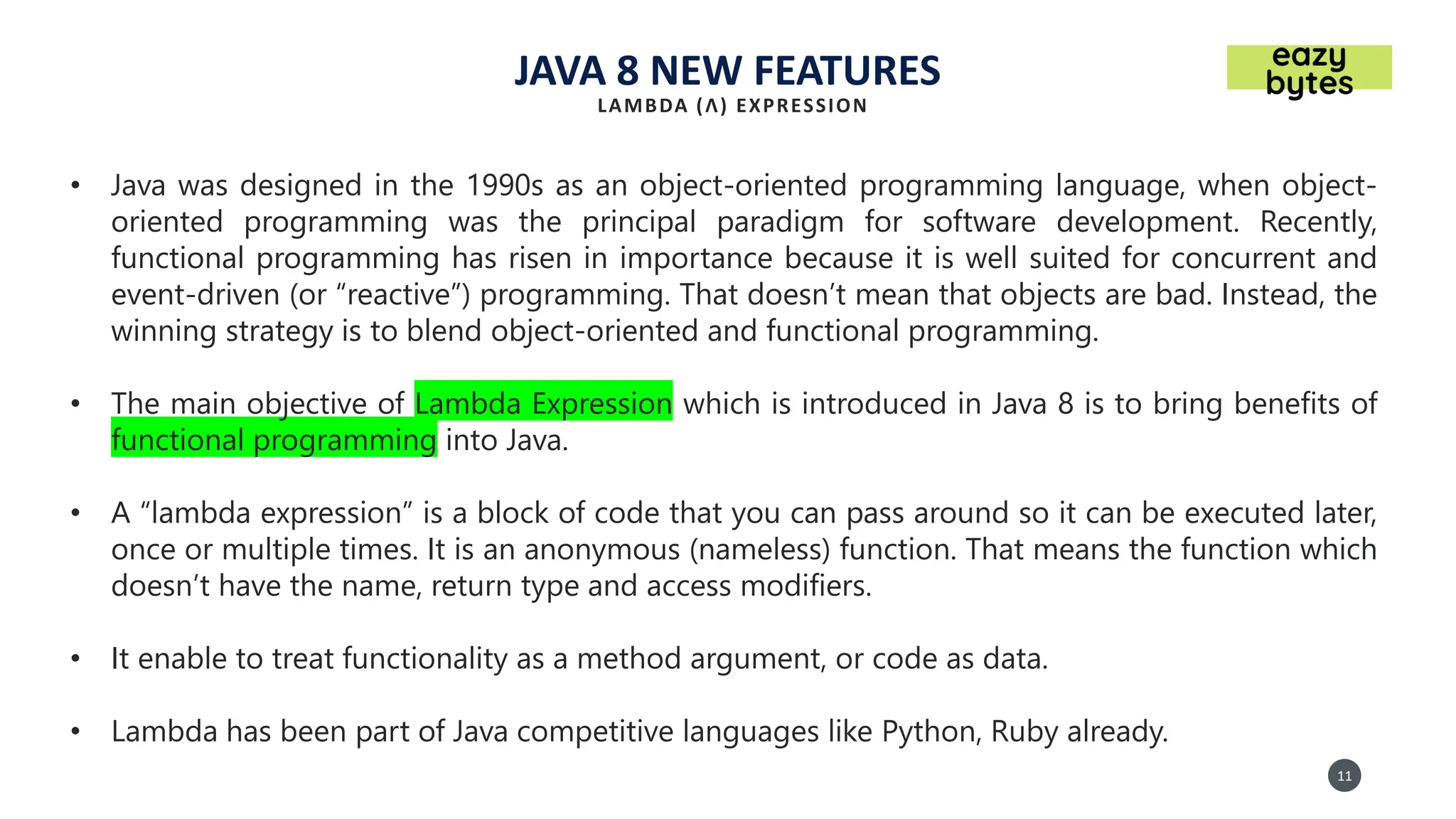











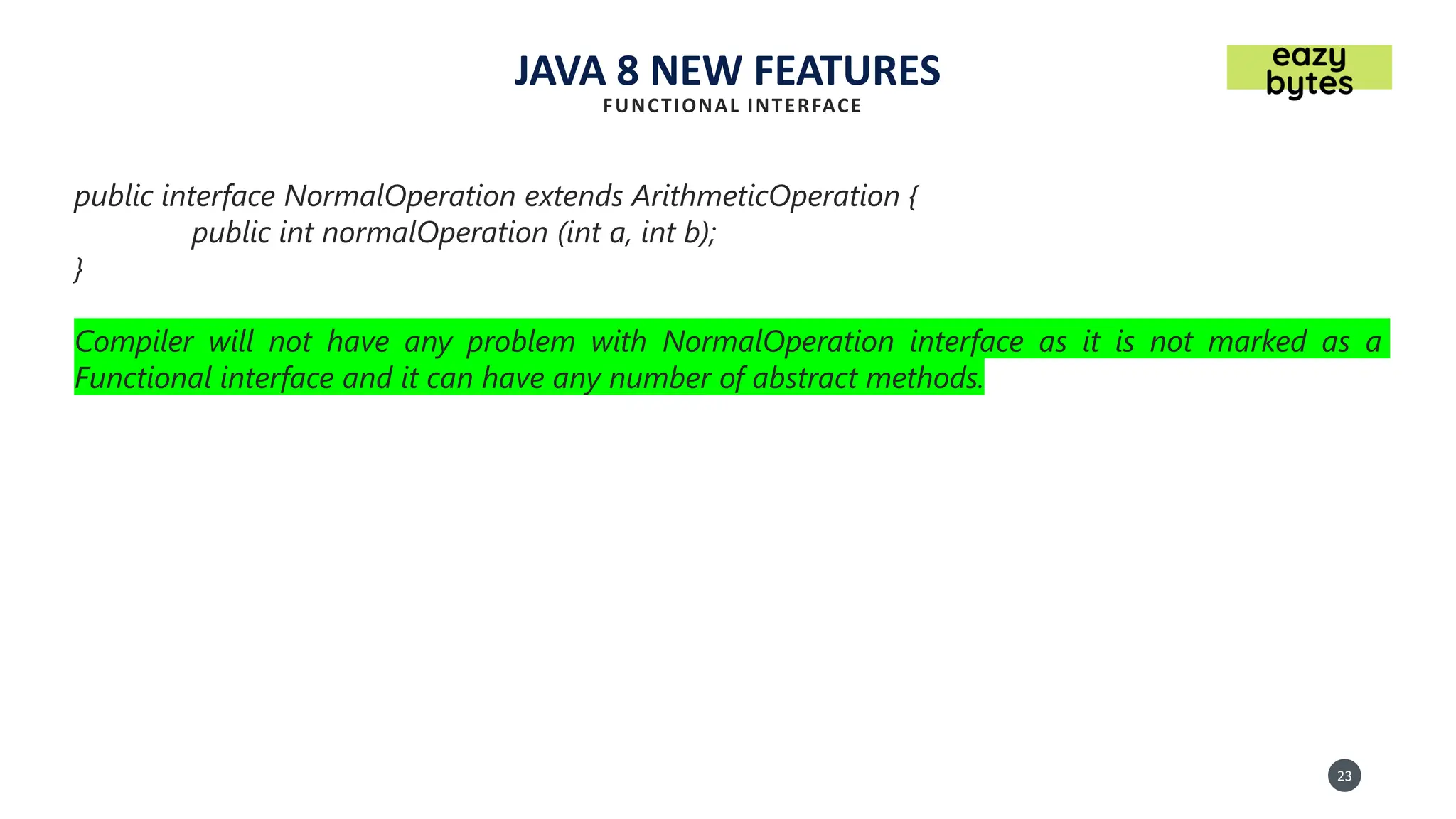

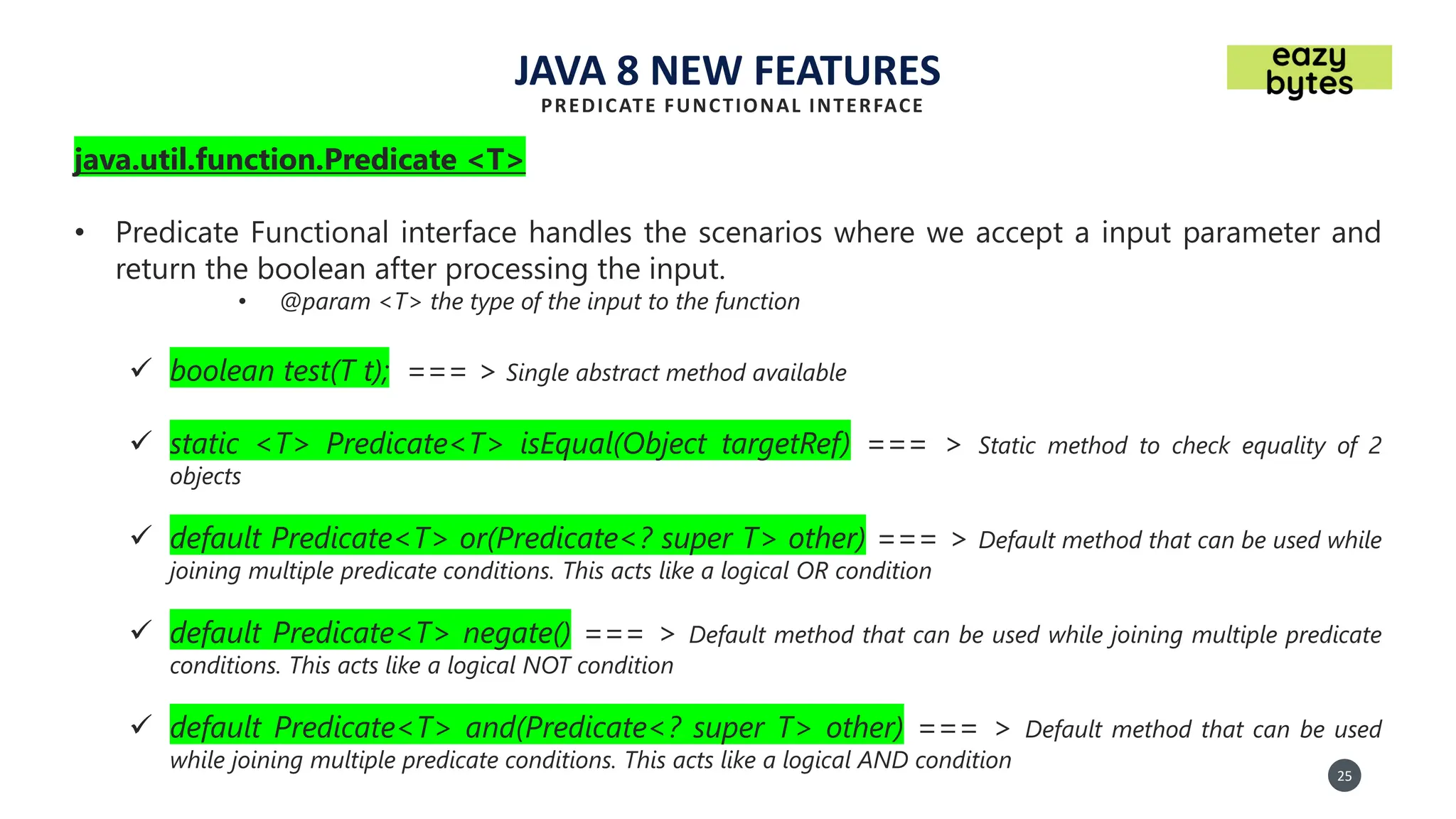
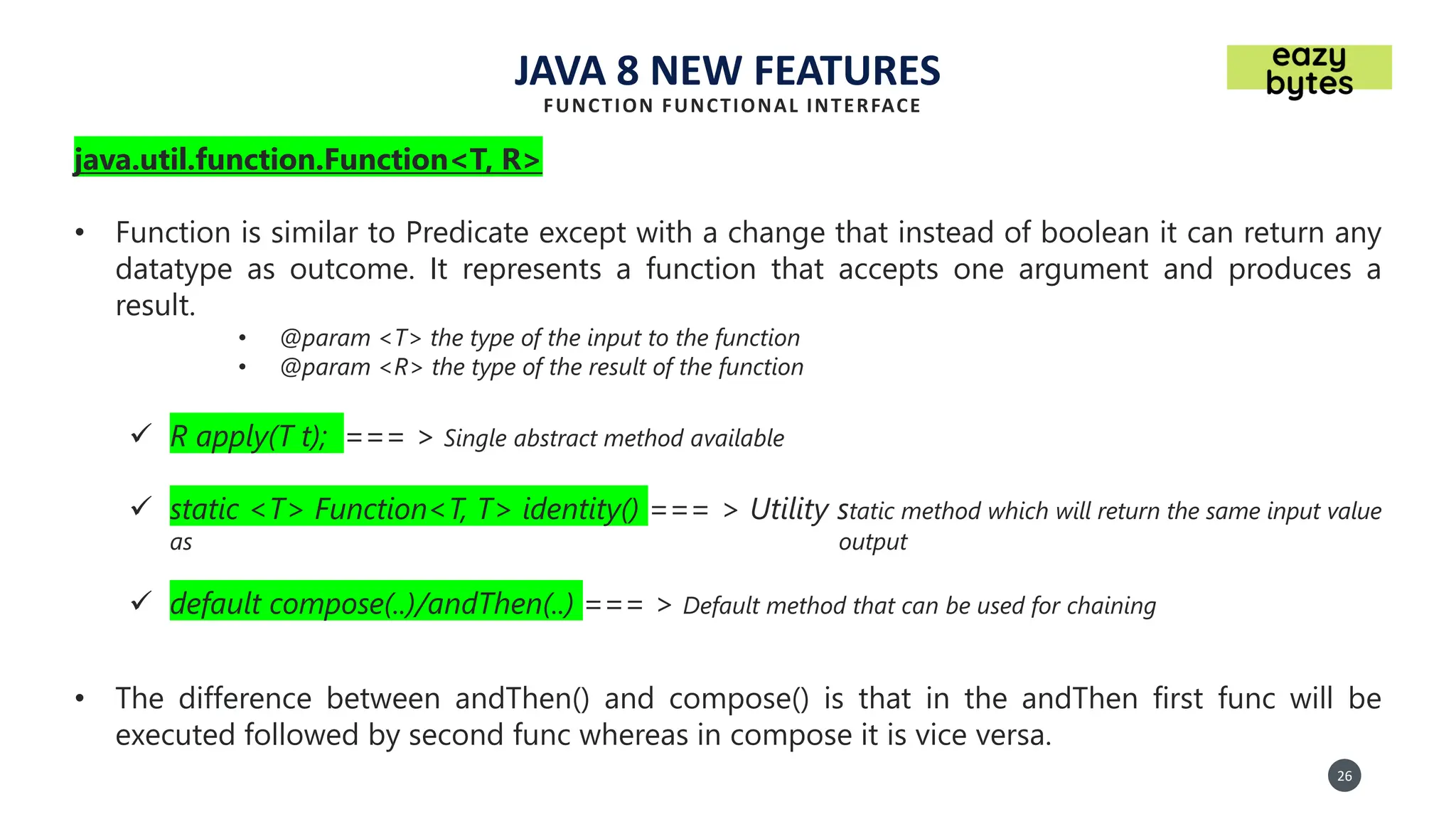

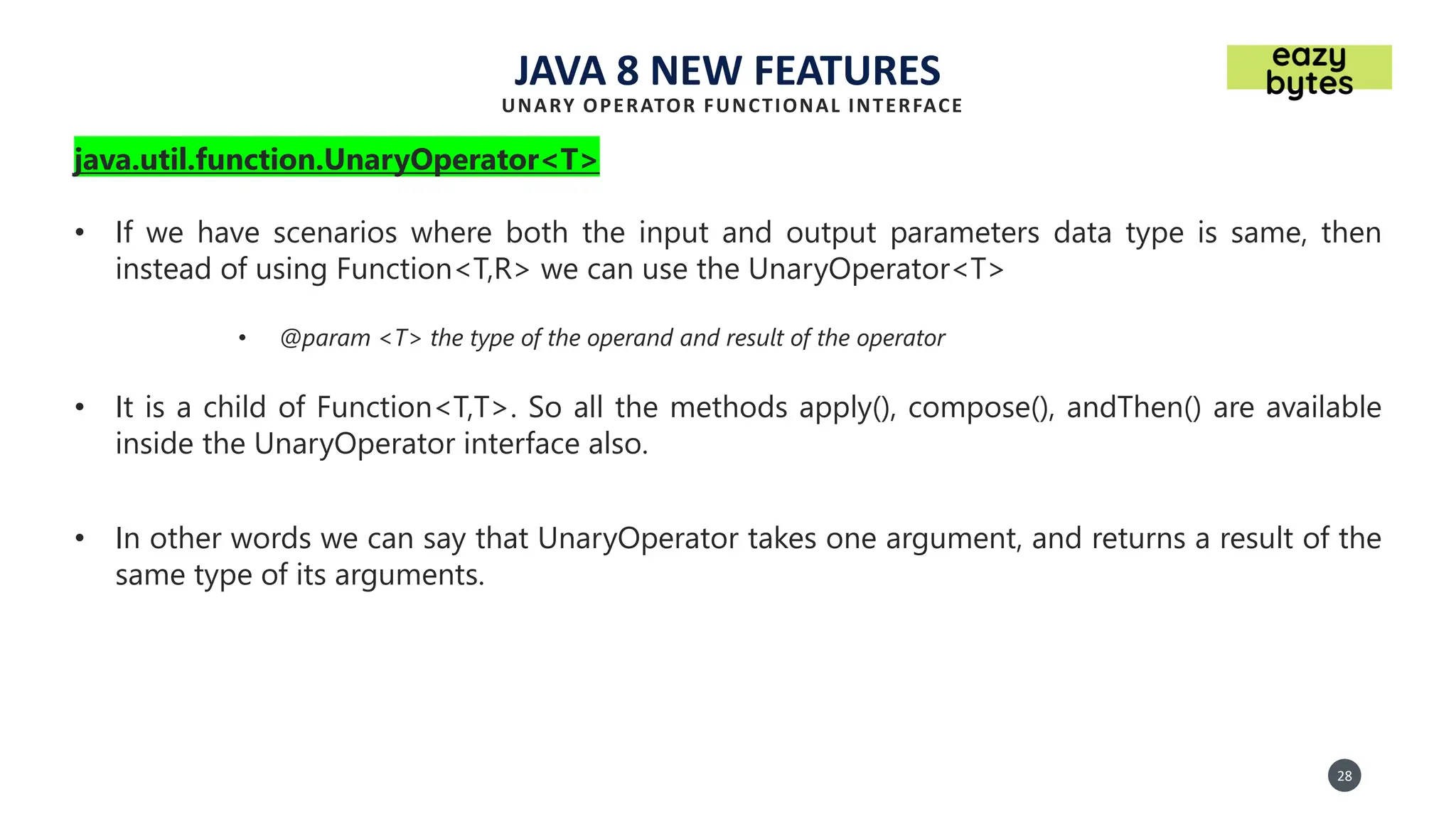
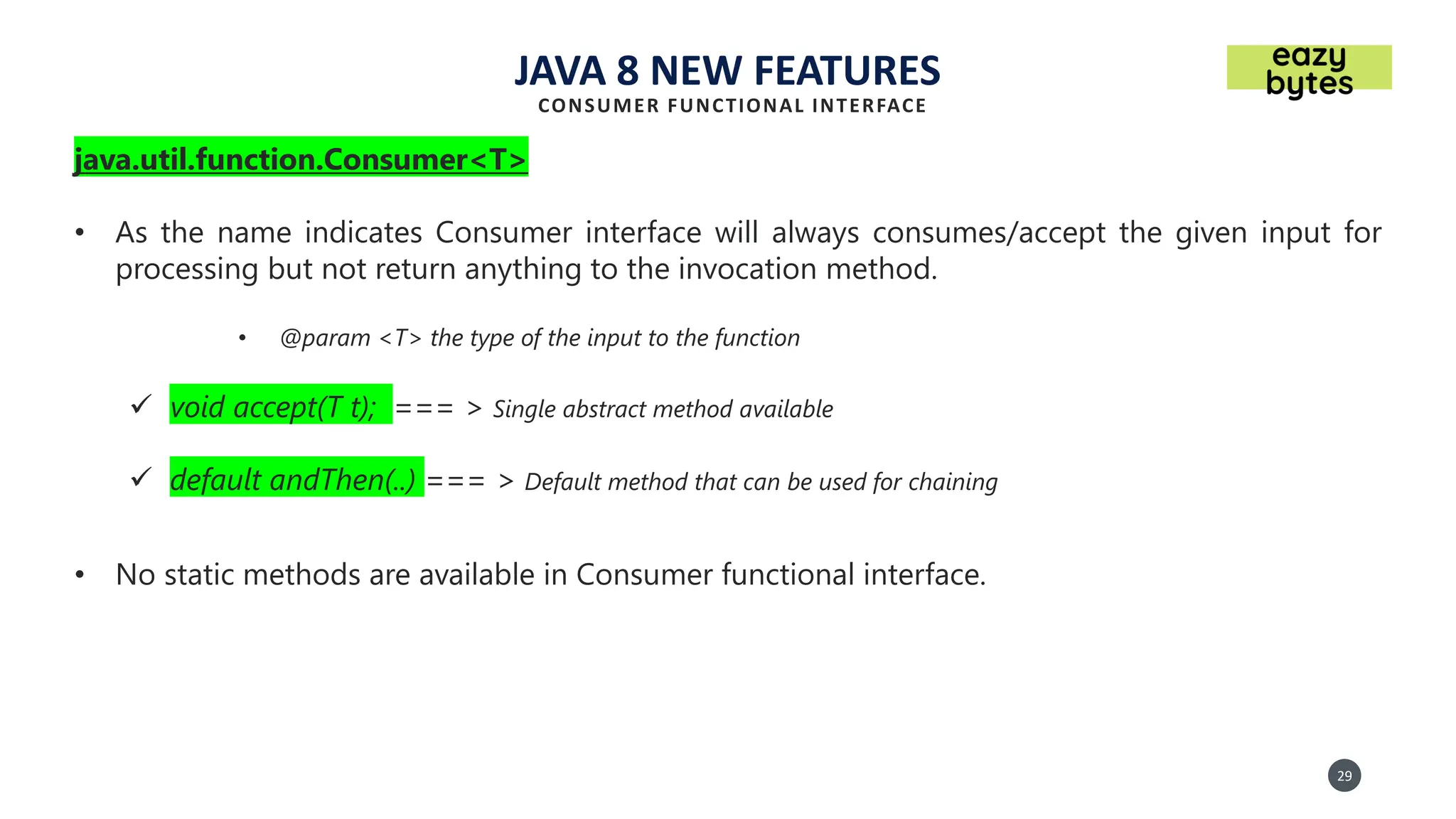
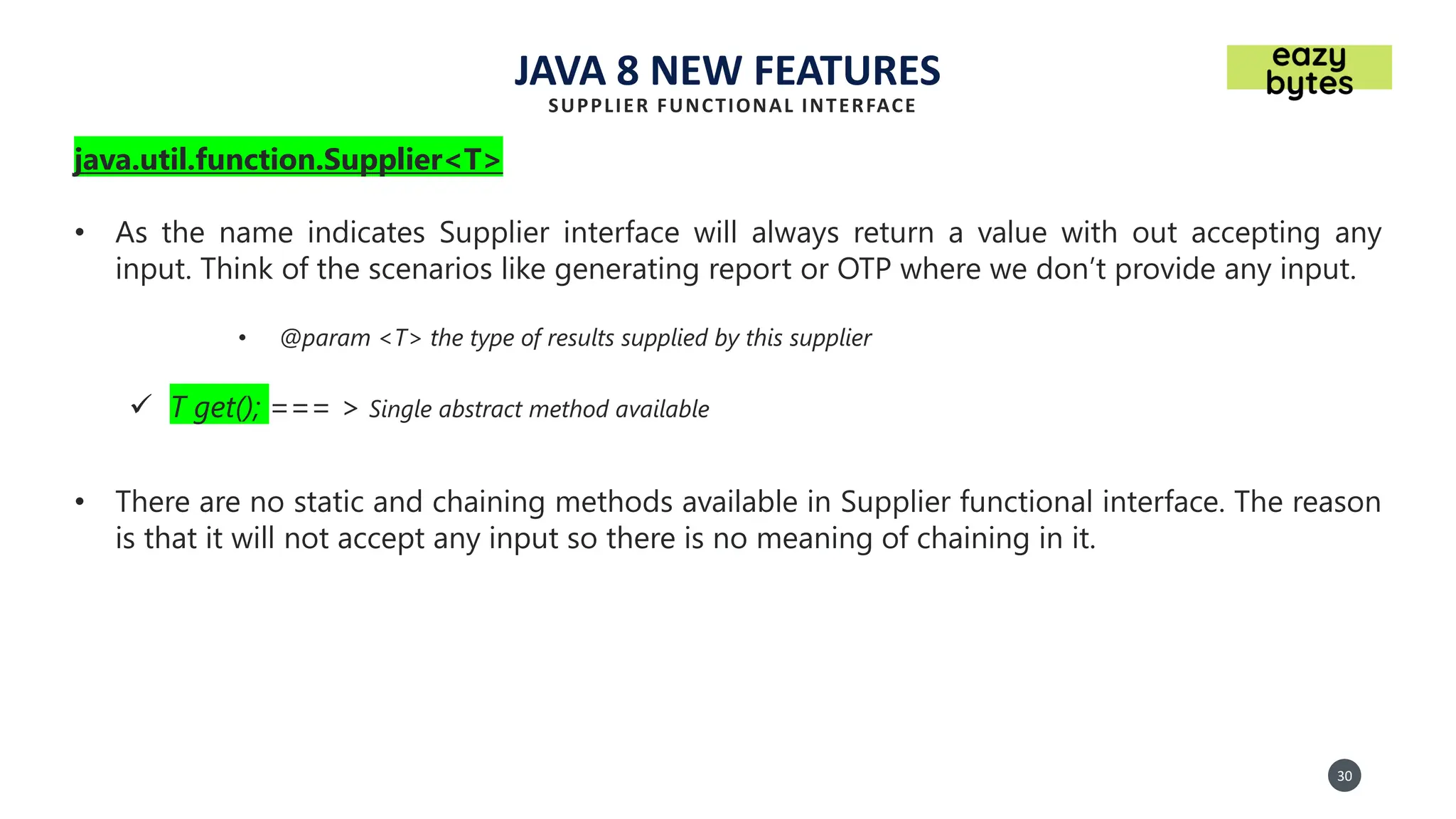
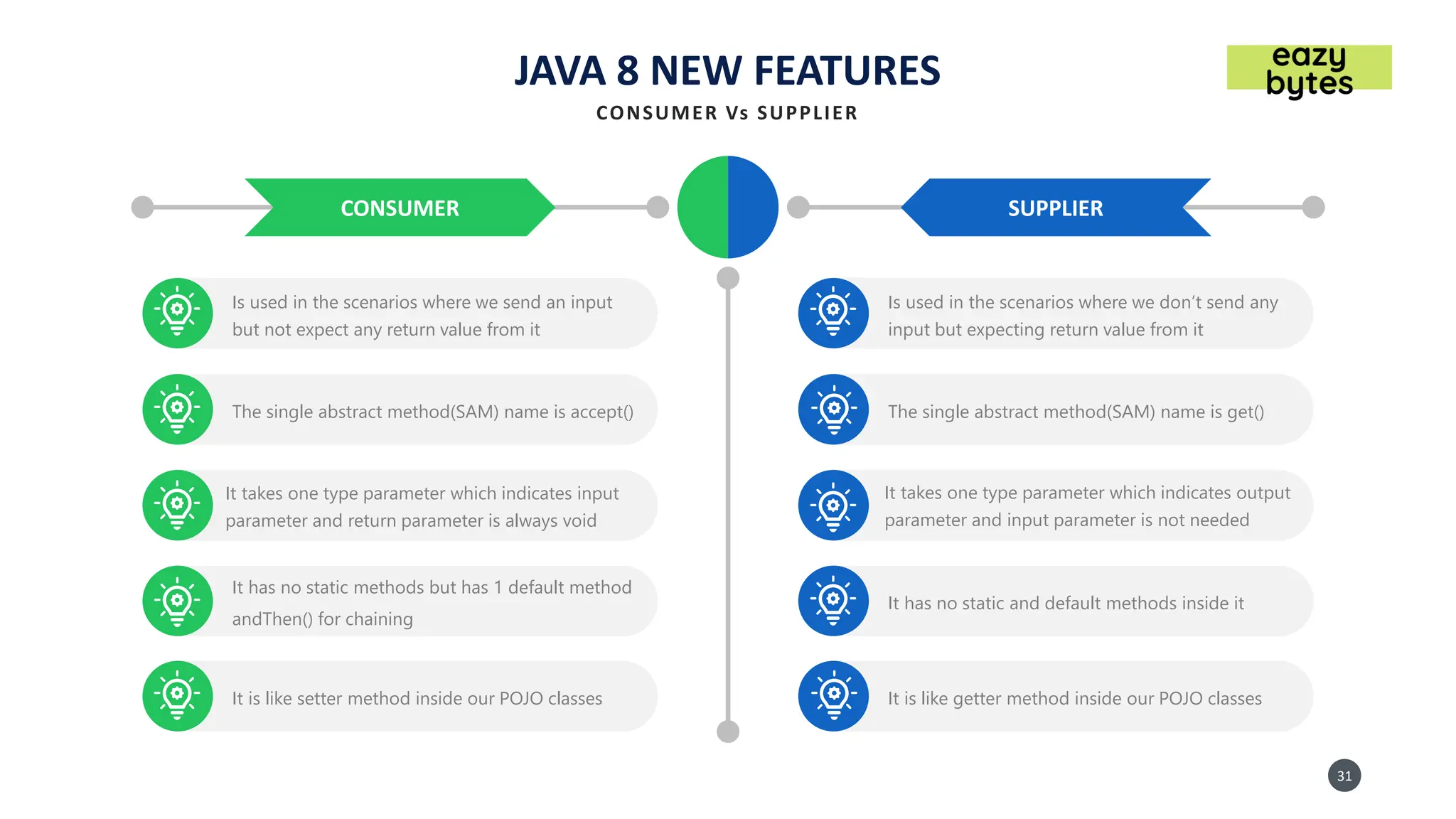

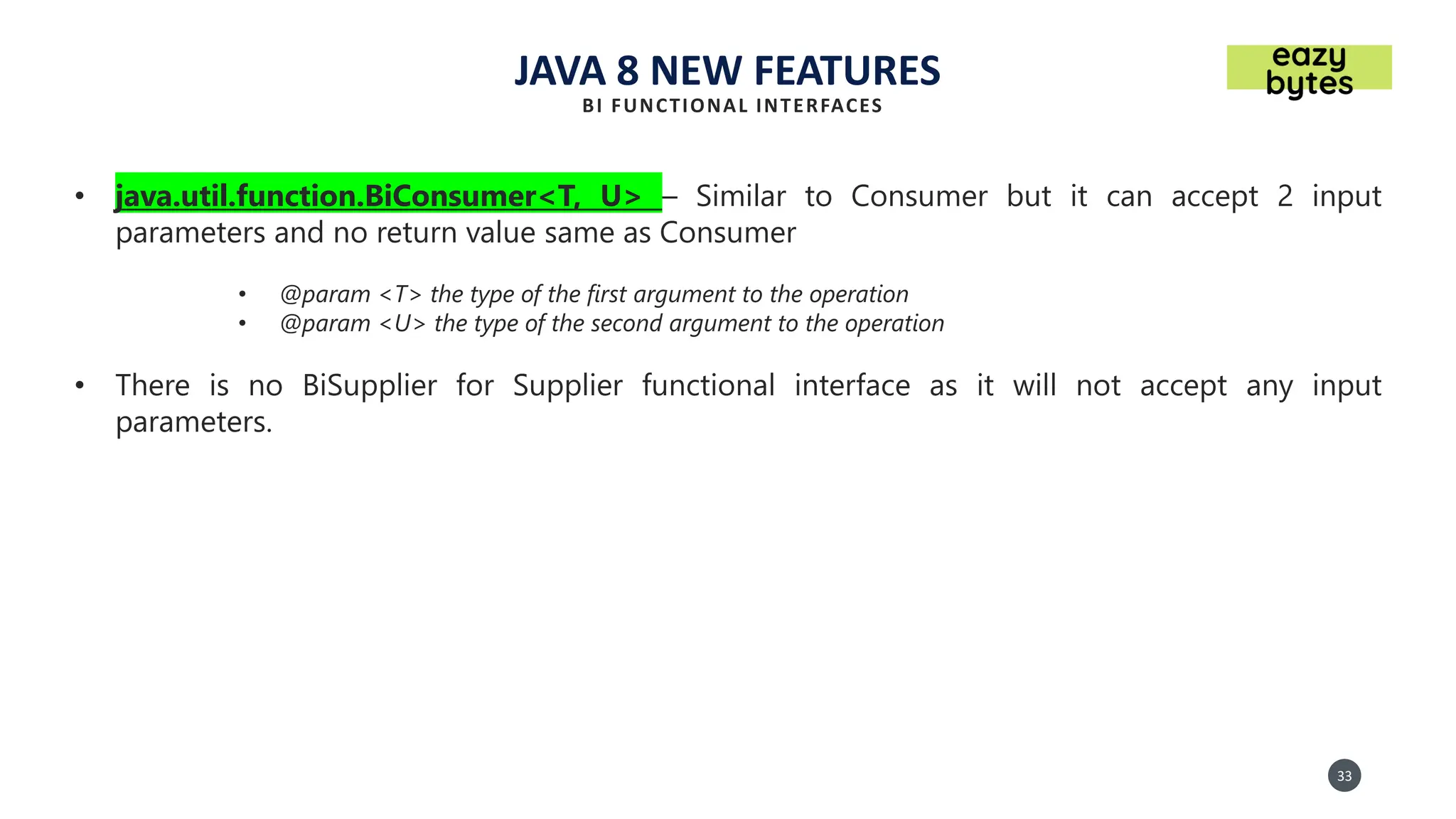
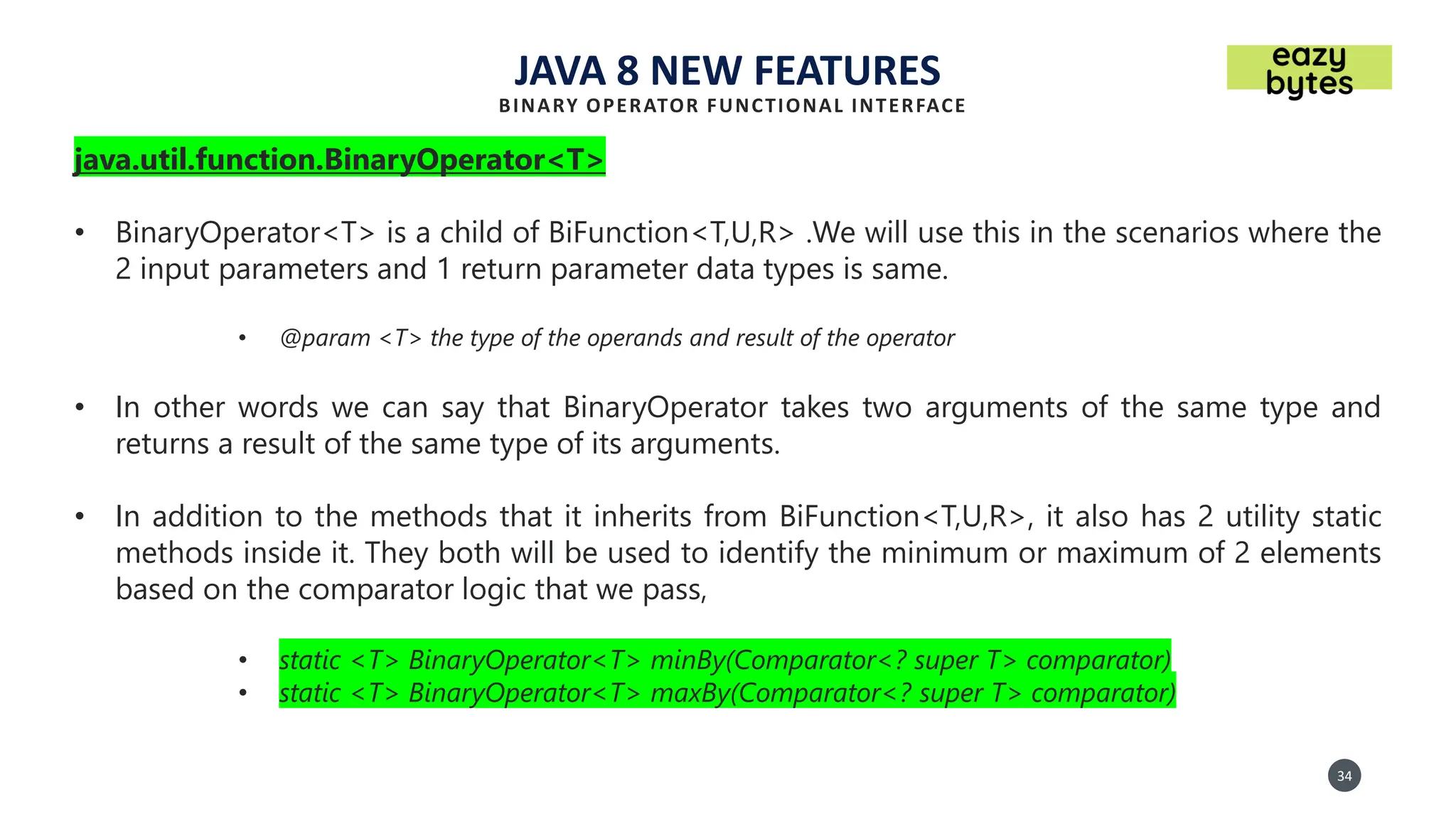
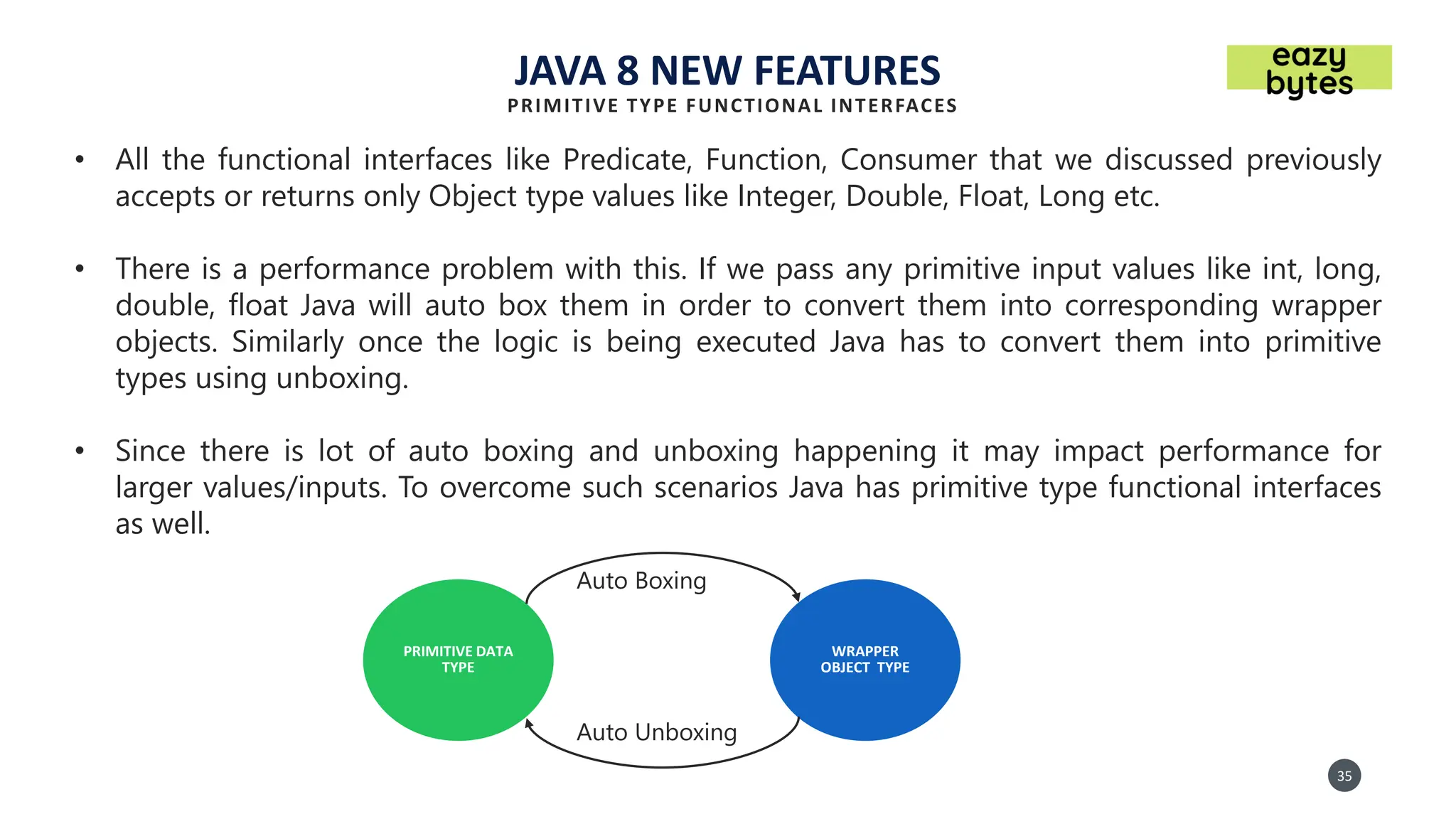
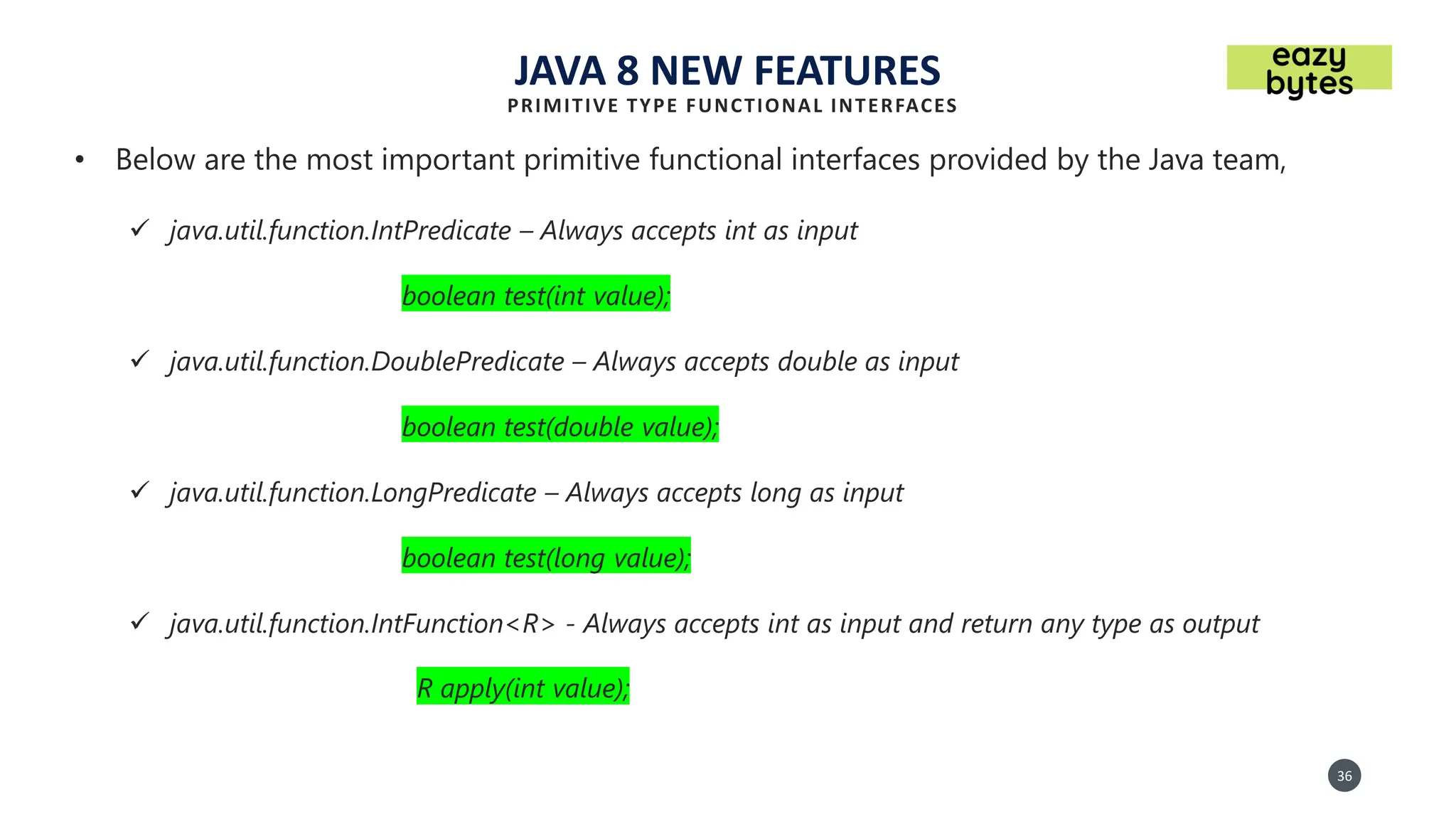
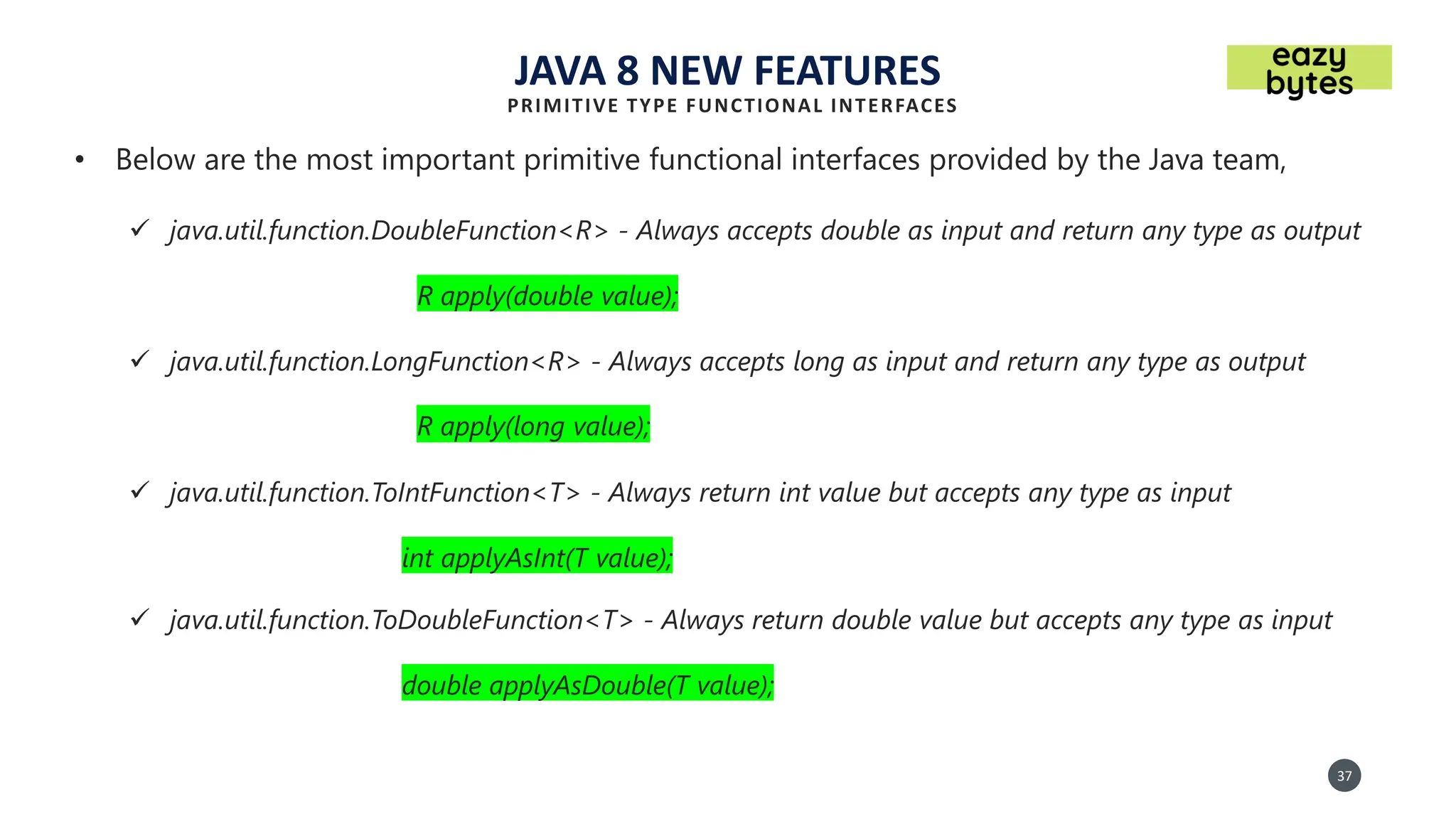



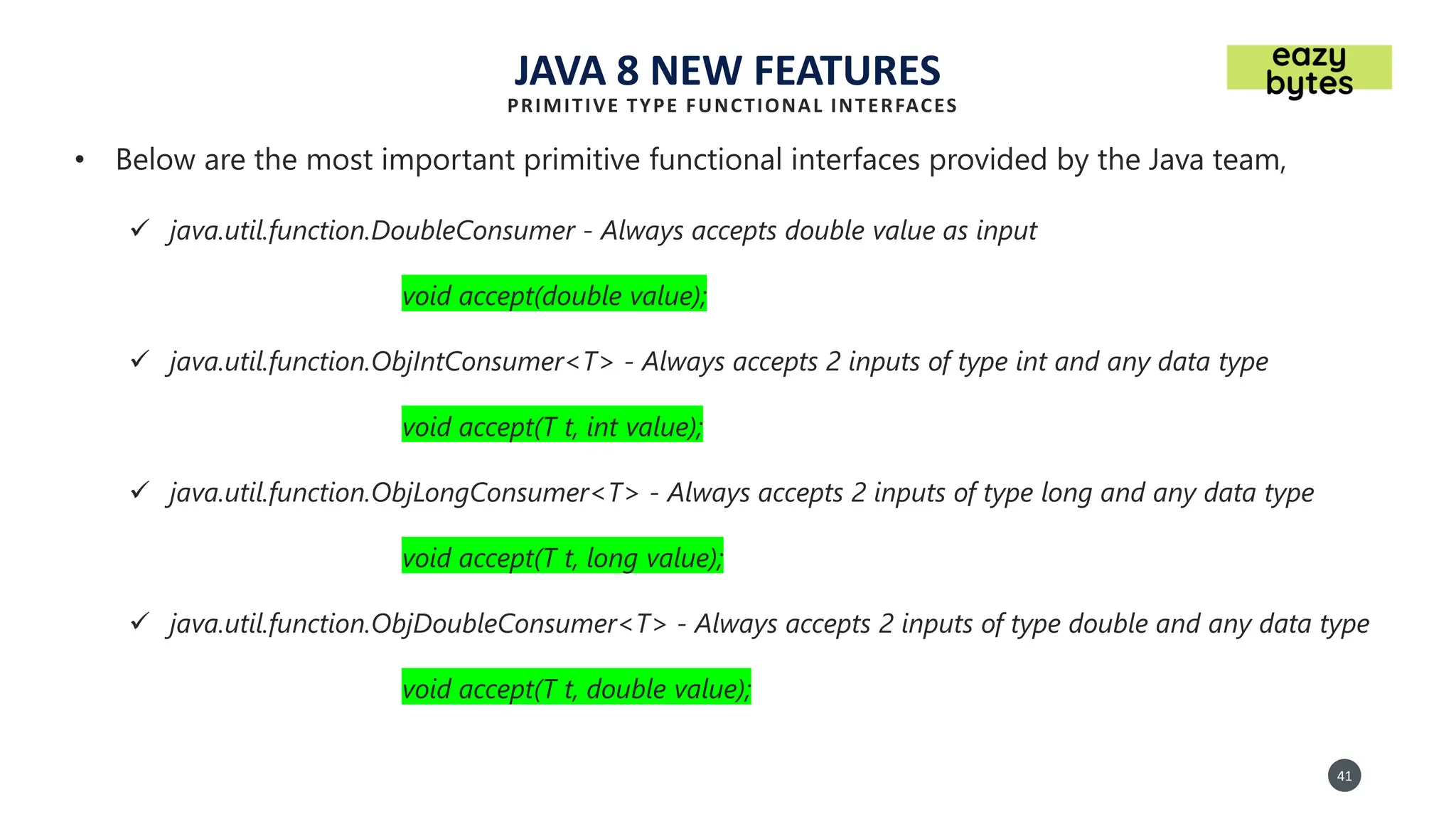

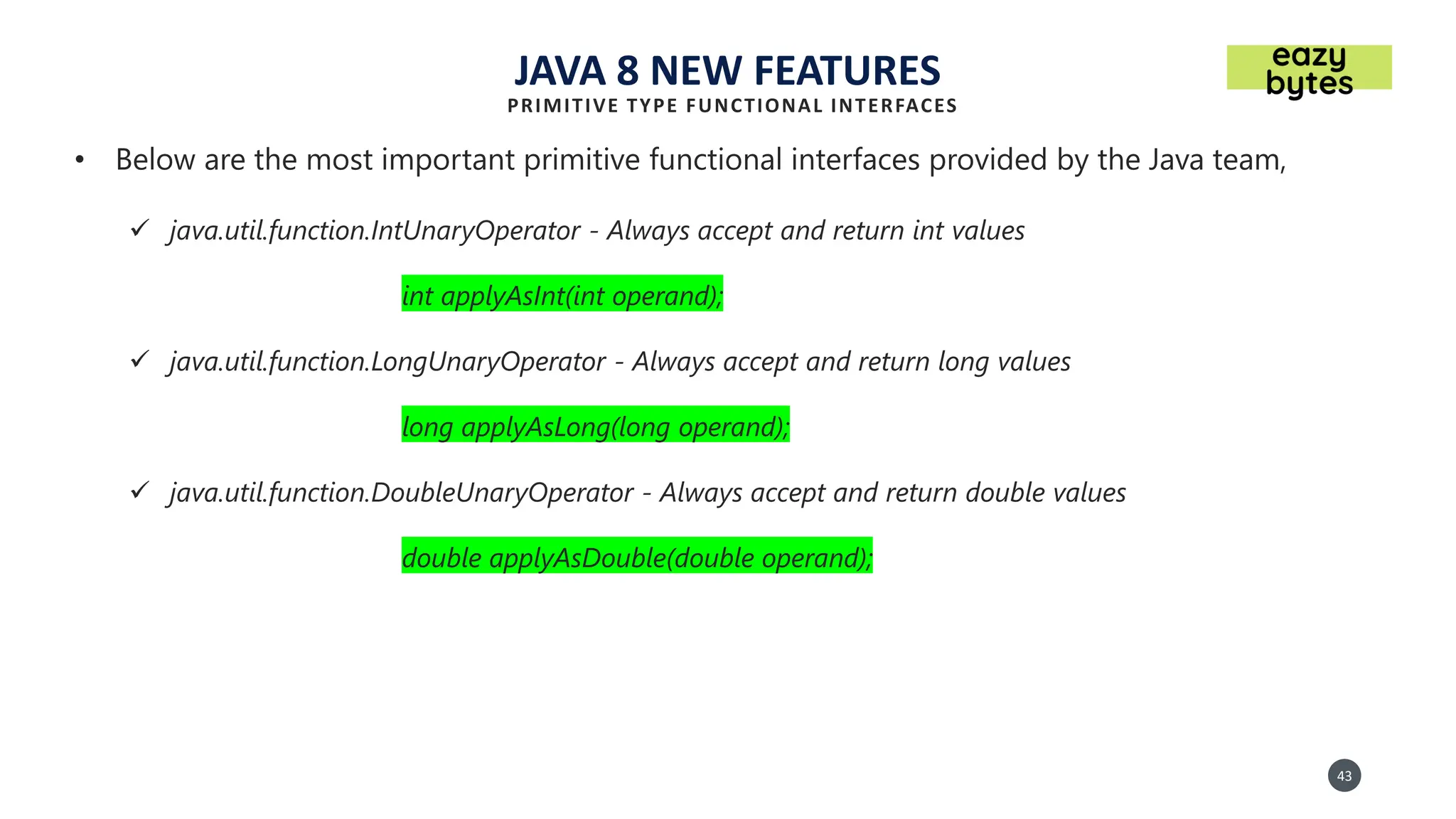
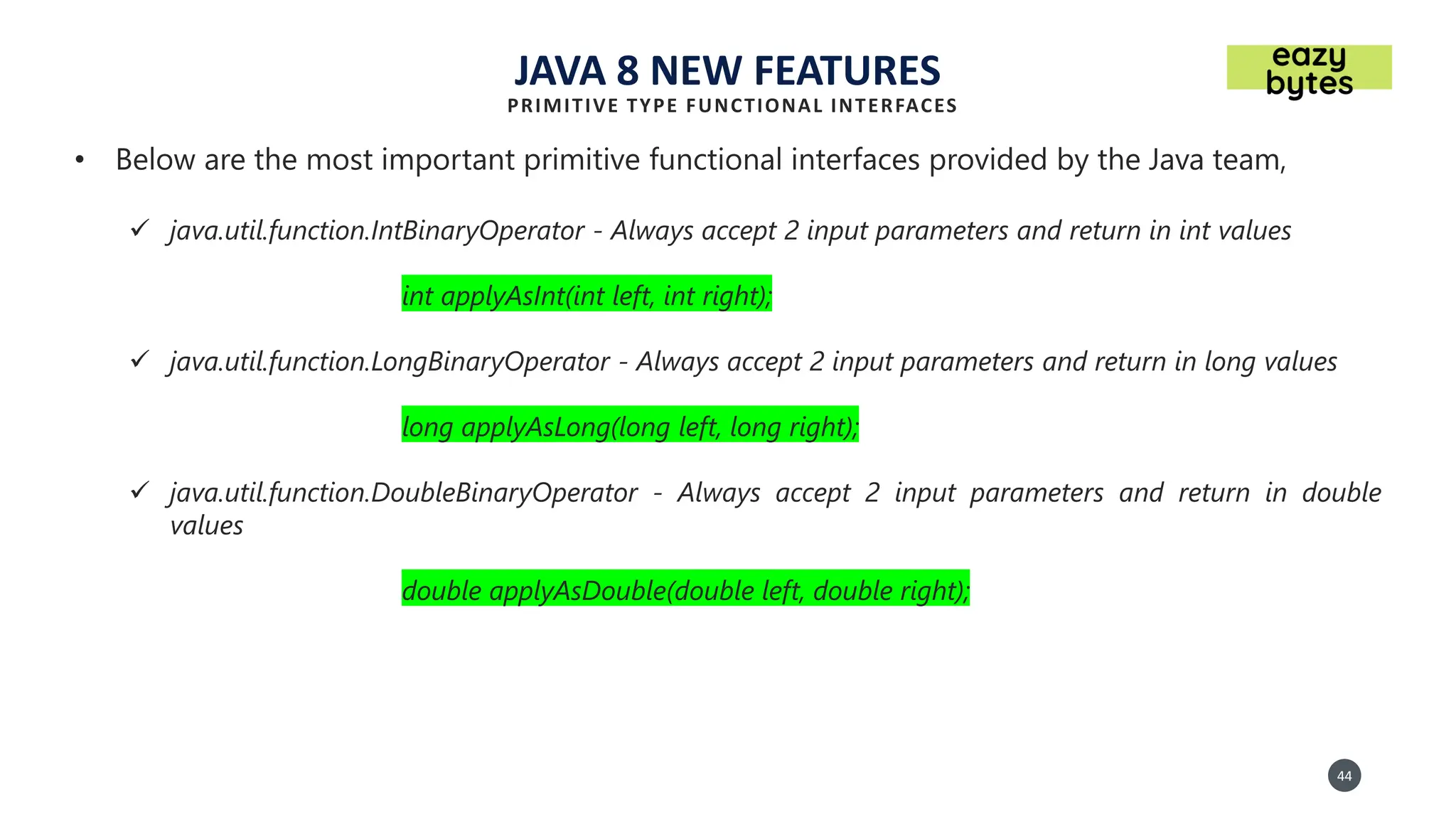
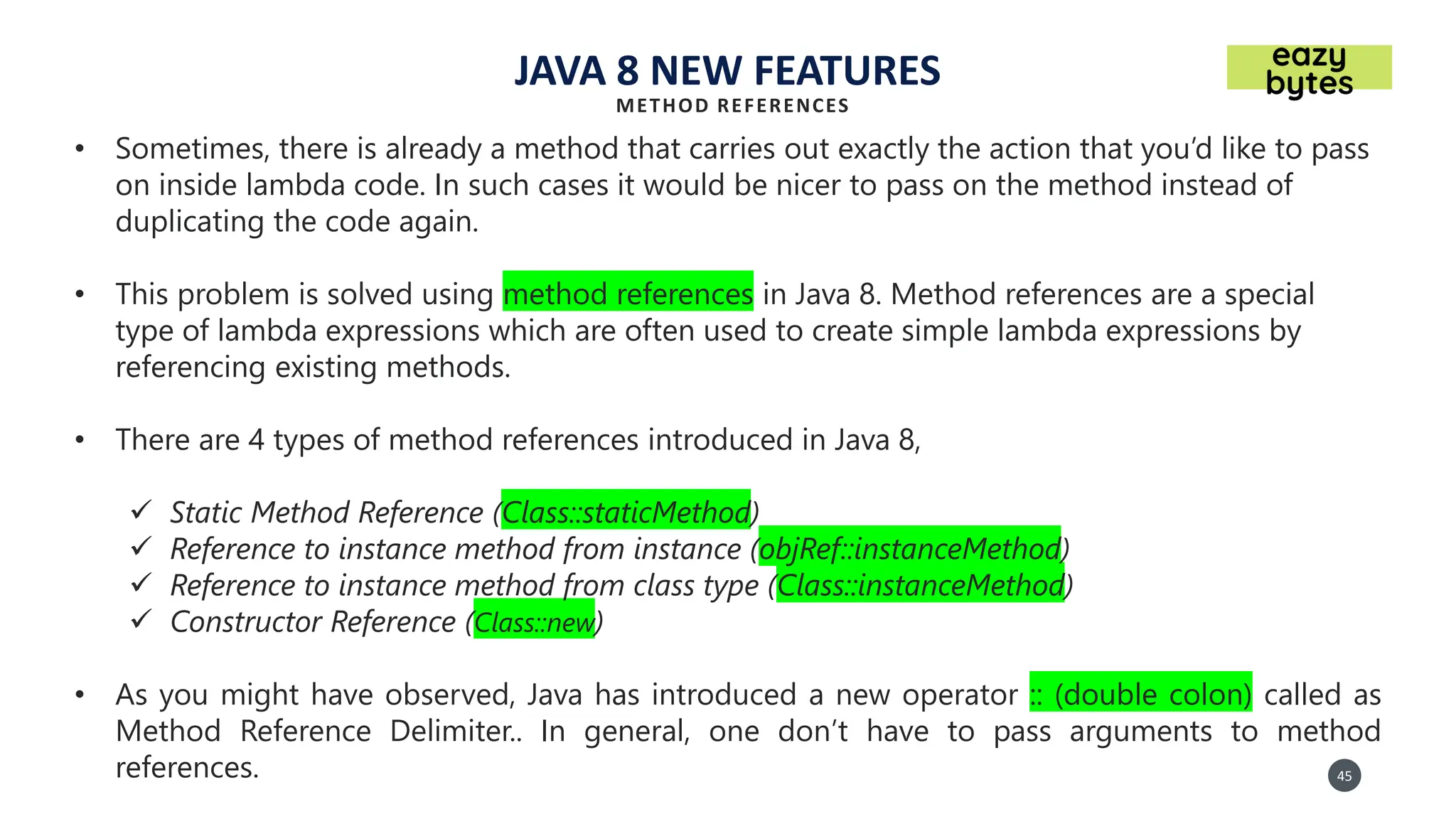
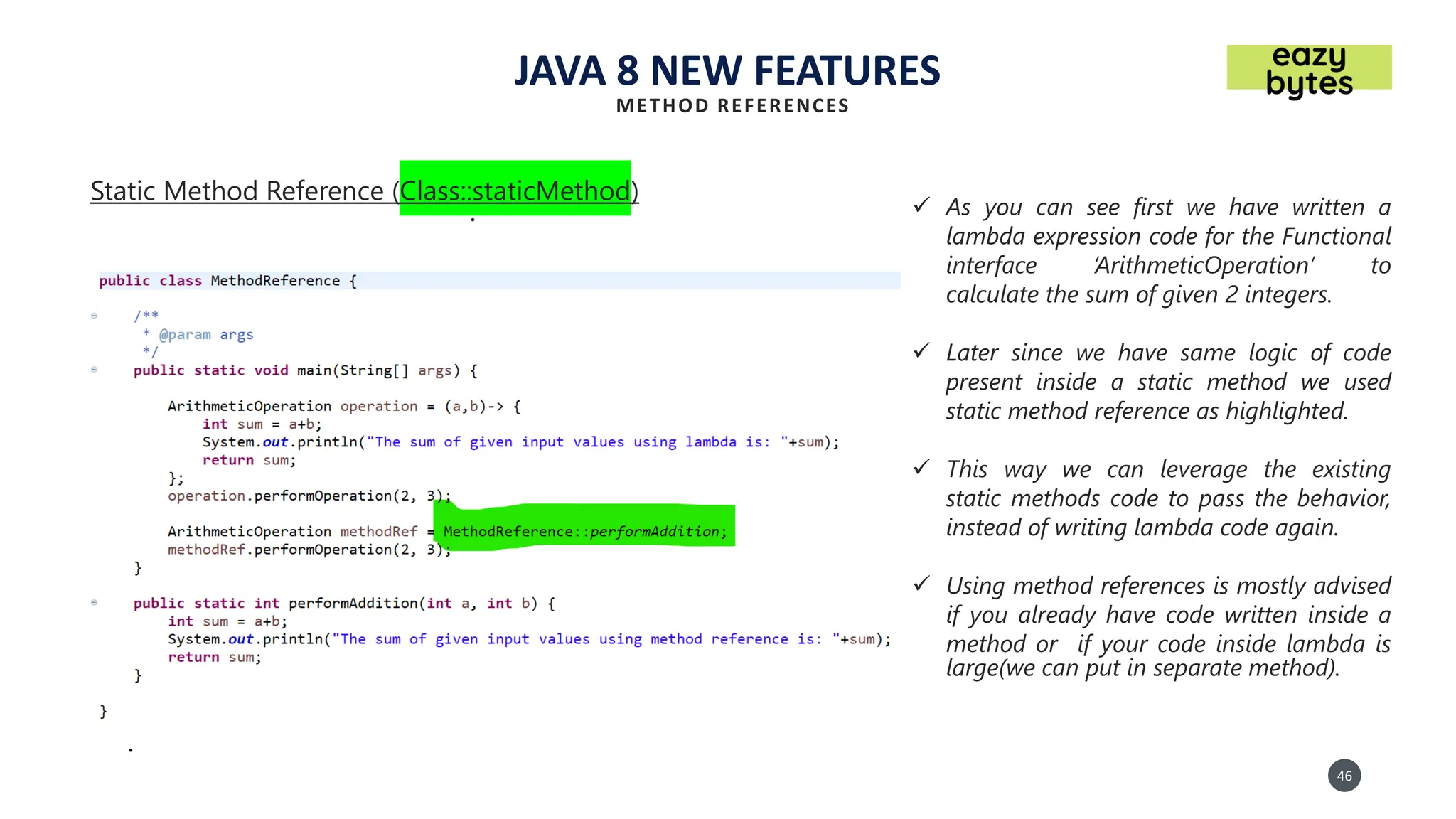


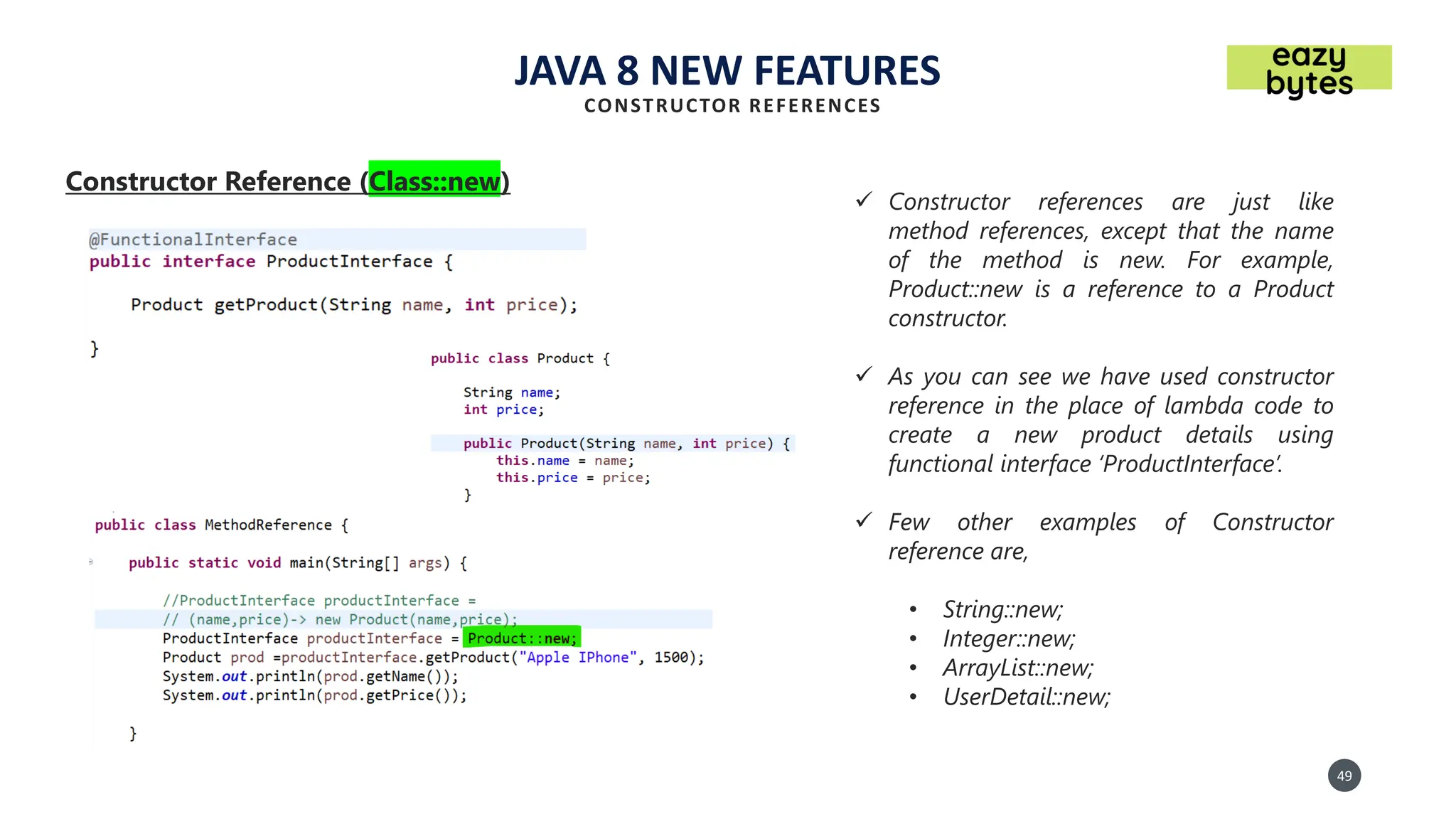
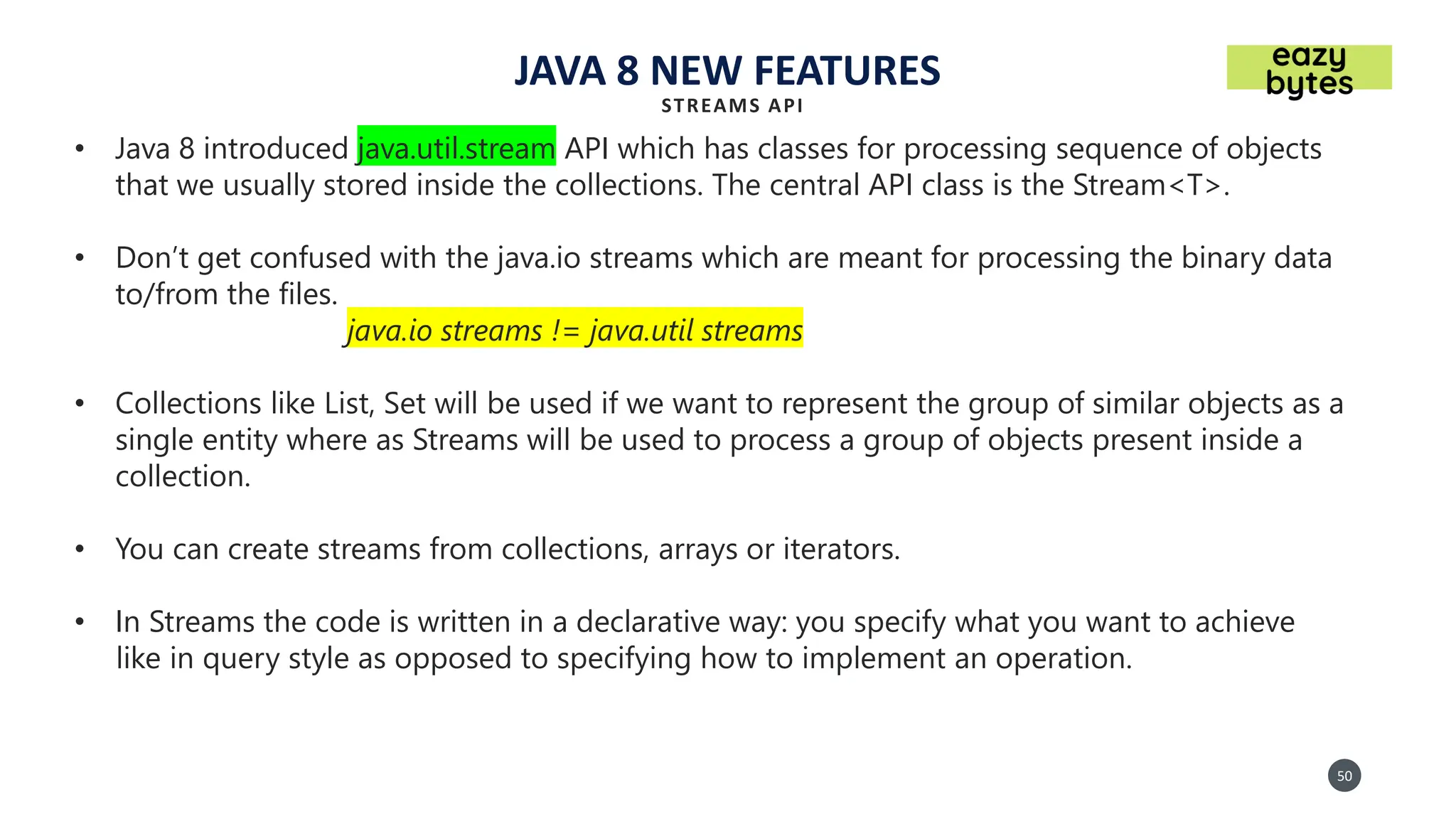



![54
54
JAVA 8 NEW FEATURES
STREAMS API
flatMap method (Intermediate Operation)
✓ Some times based on the input elements we may ended up
with multiple streams post map method and if we try to
collect them we will get a list of streams instead of a single
stream.
✓ For such cases we can use flatMap. It is the combination of a
map and a flat operation i.e., it applies a function to
elements as well as flatten them.
✓
Eazy
Bytes
Stream<String>
Stream of Words
E a z
y
B y t e
s
map
Stream<String[]>
E a z y
B y t e
s flatMap forEach
Stream<String> Print the char values
E
a
z
y
B
y
t
e
s](https://image.slidesharecdn.com/java8-newfeatures-231026104942-a528e6a8/75/Java-8-New-Features-pdf-54-2048.jpg)
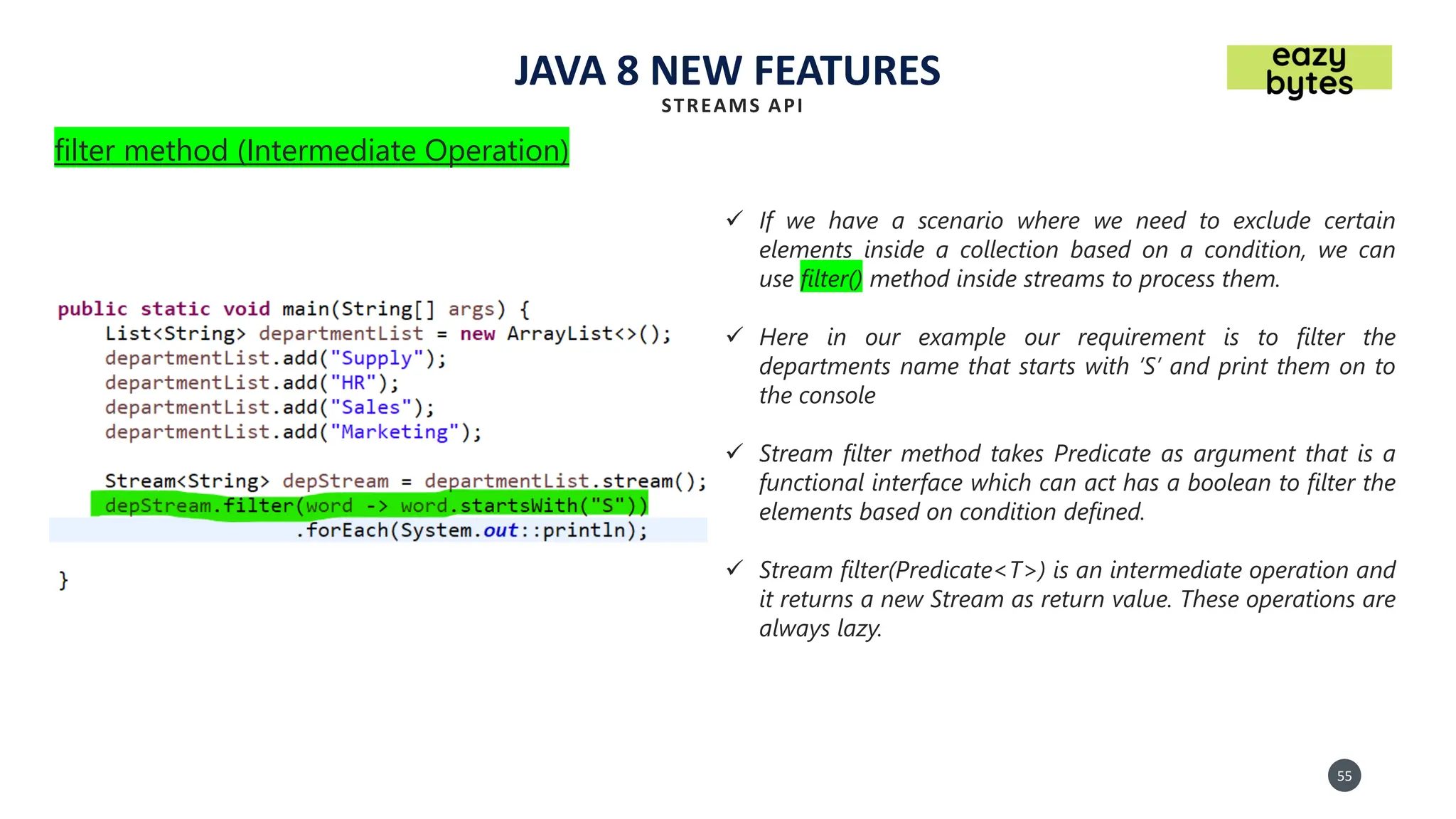
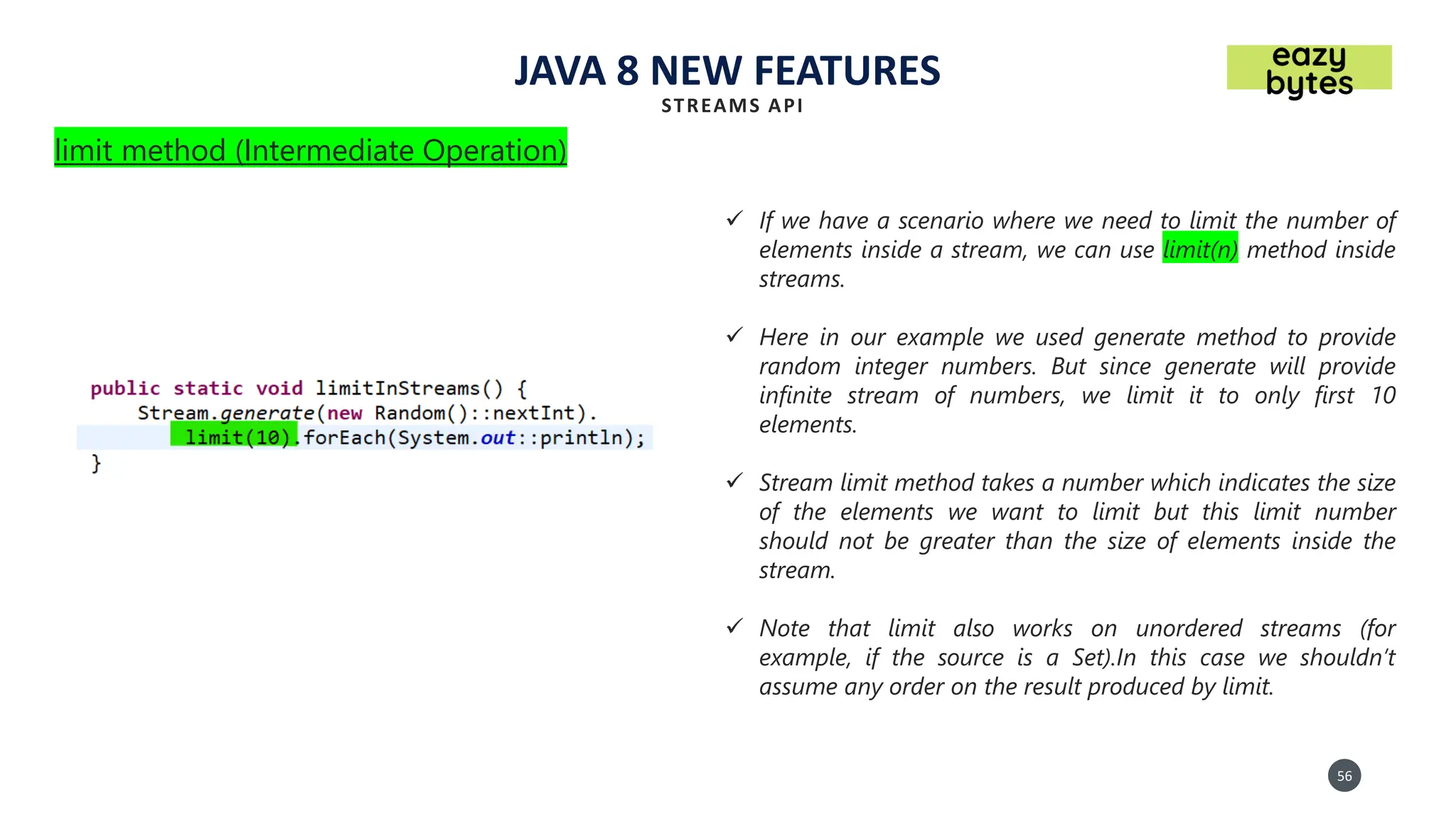
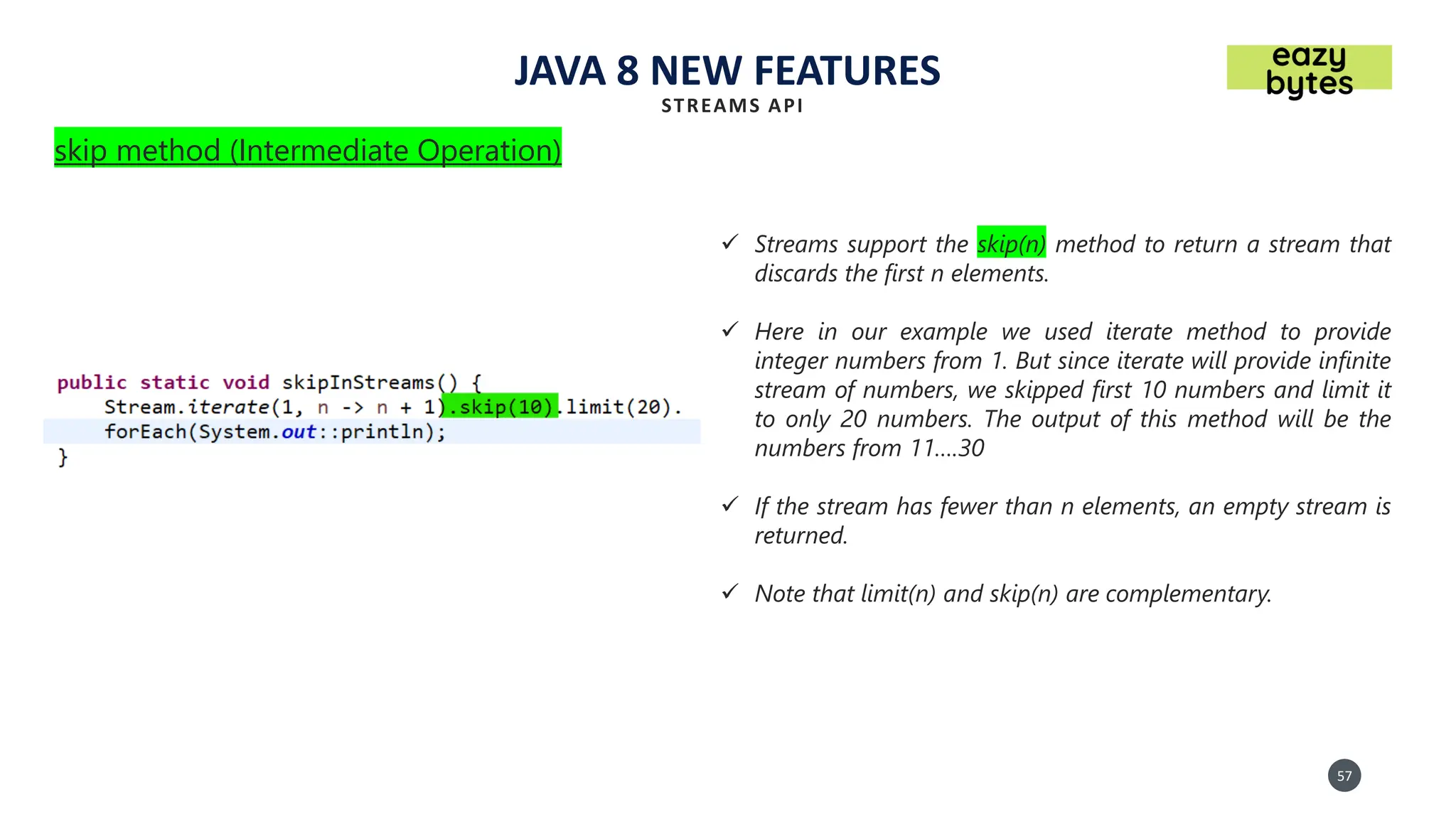
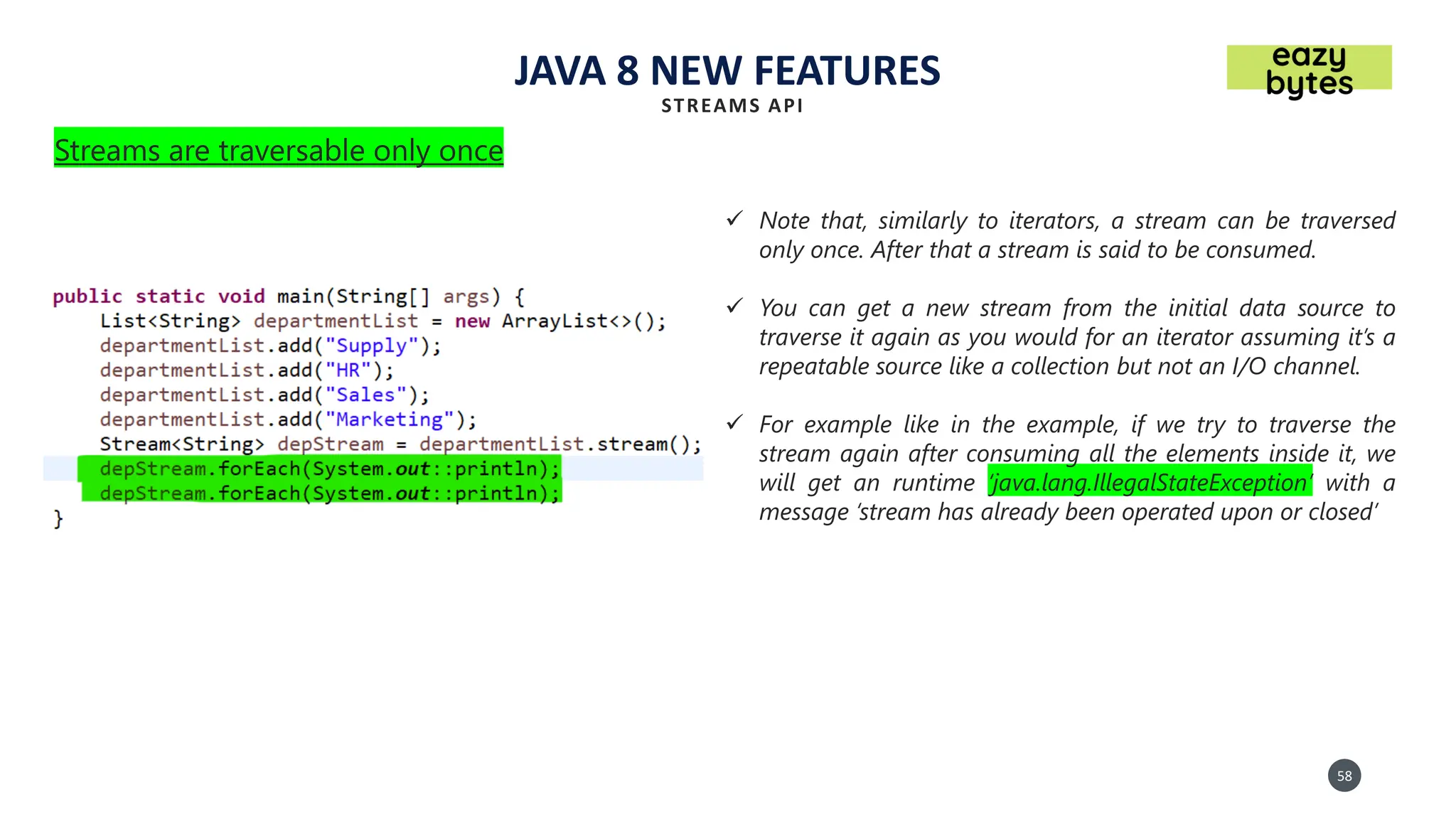
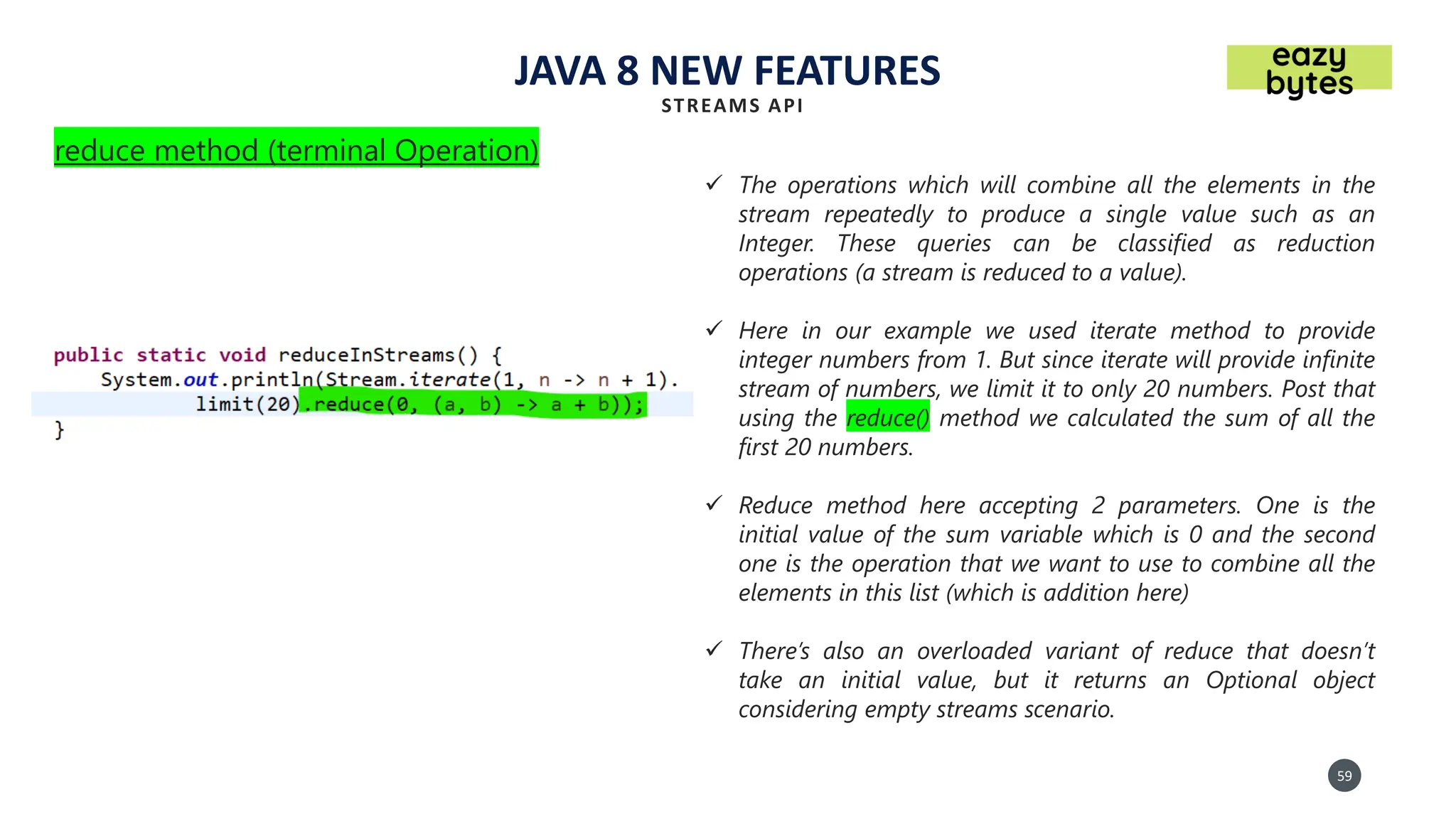


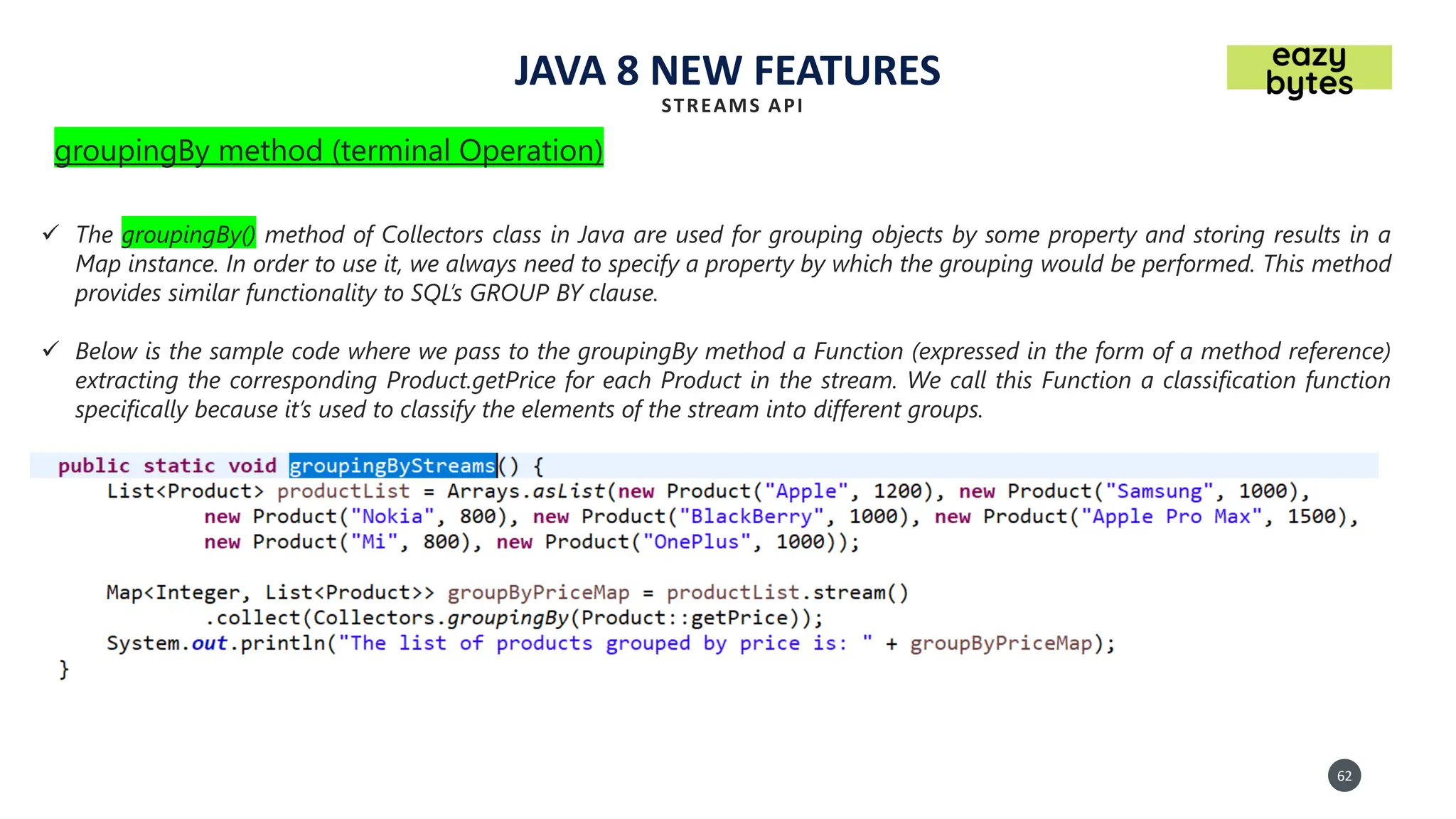
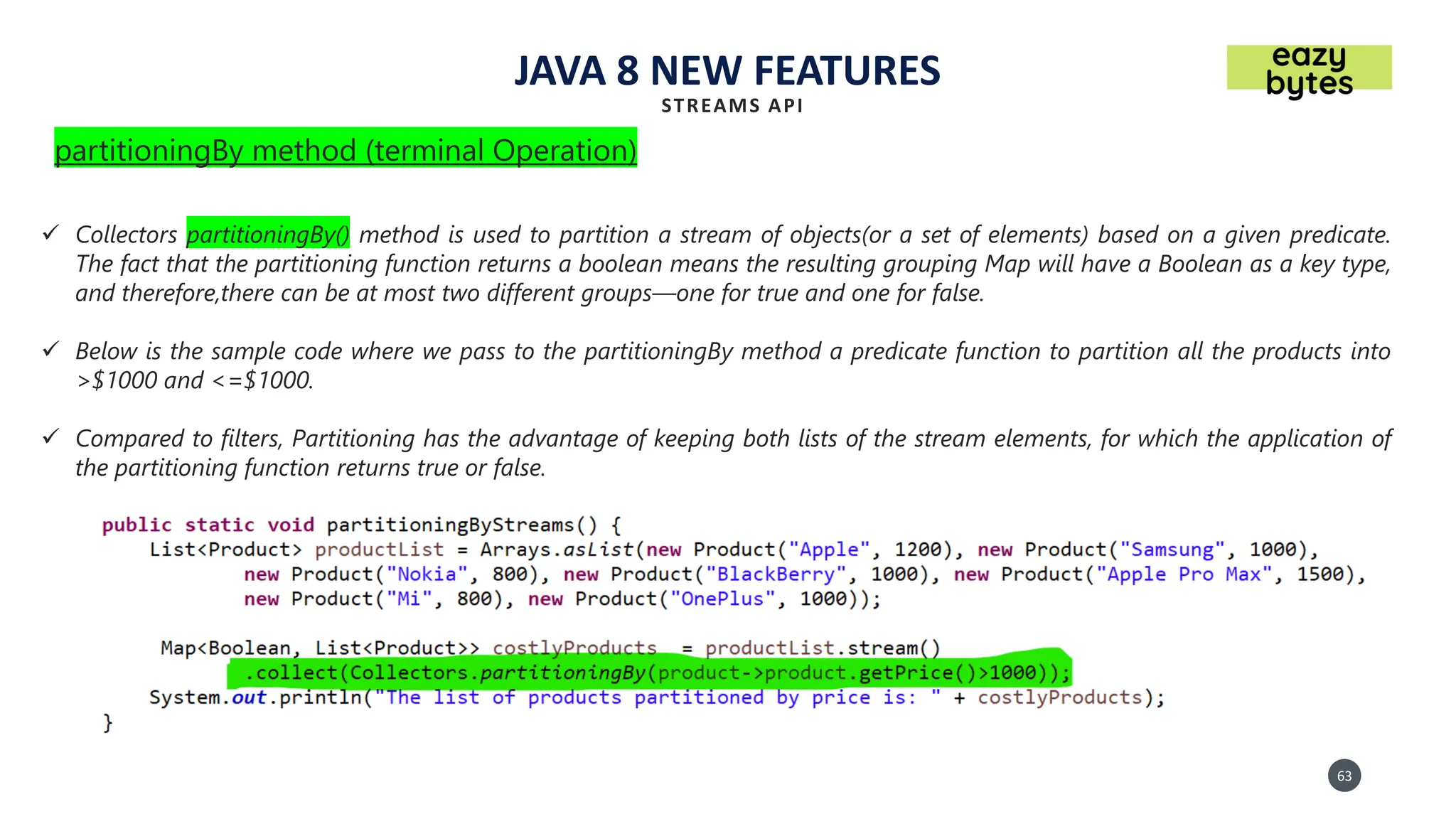
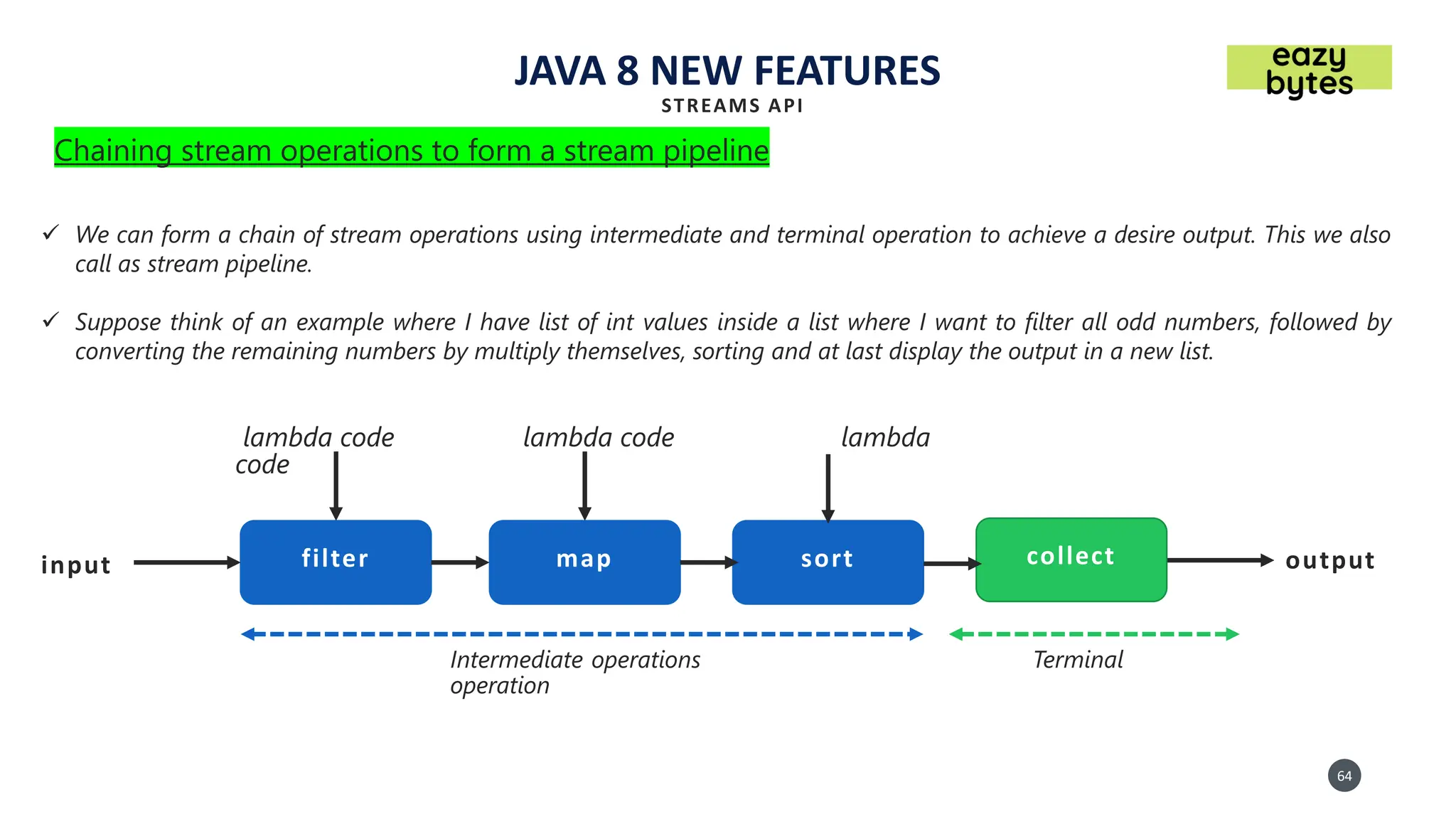
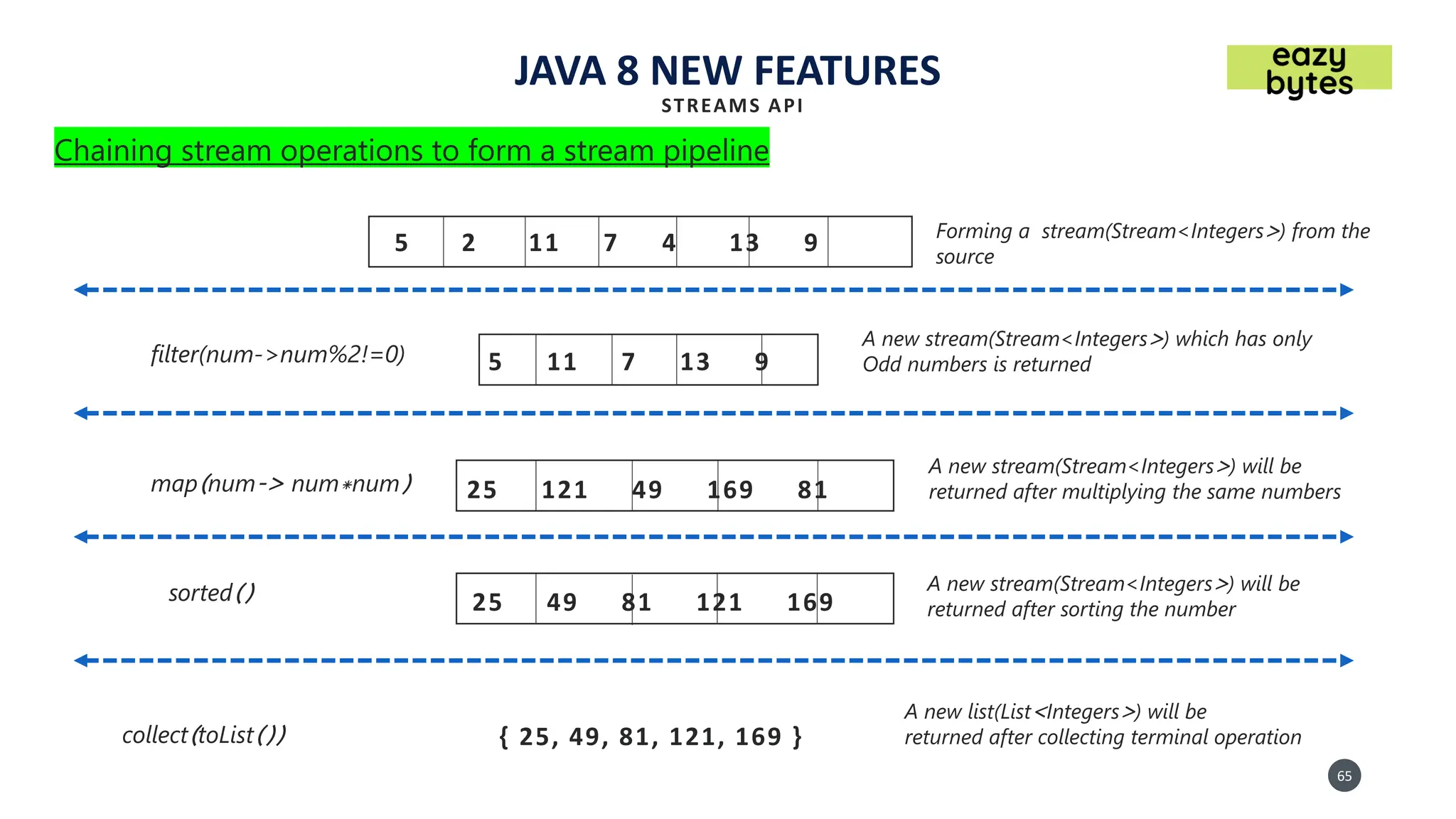
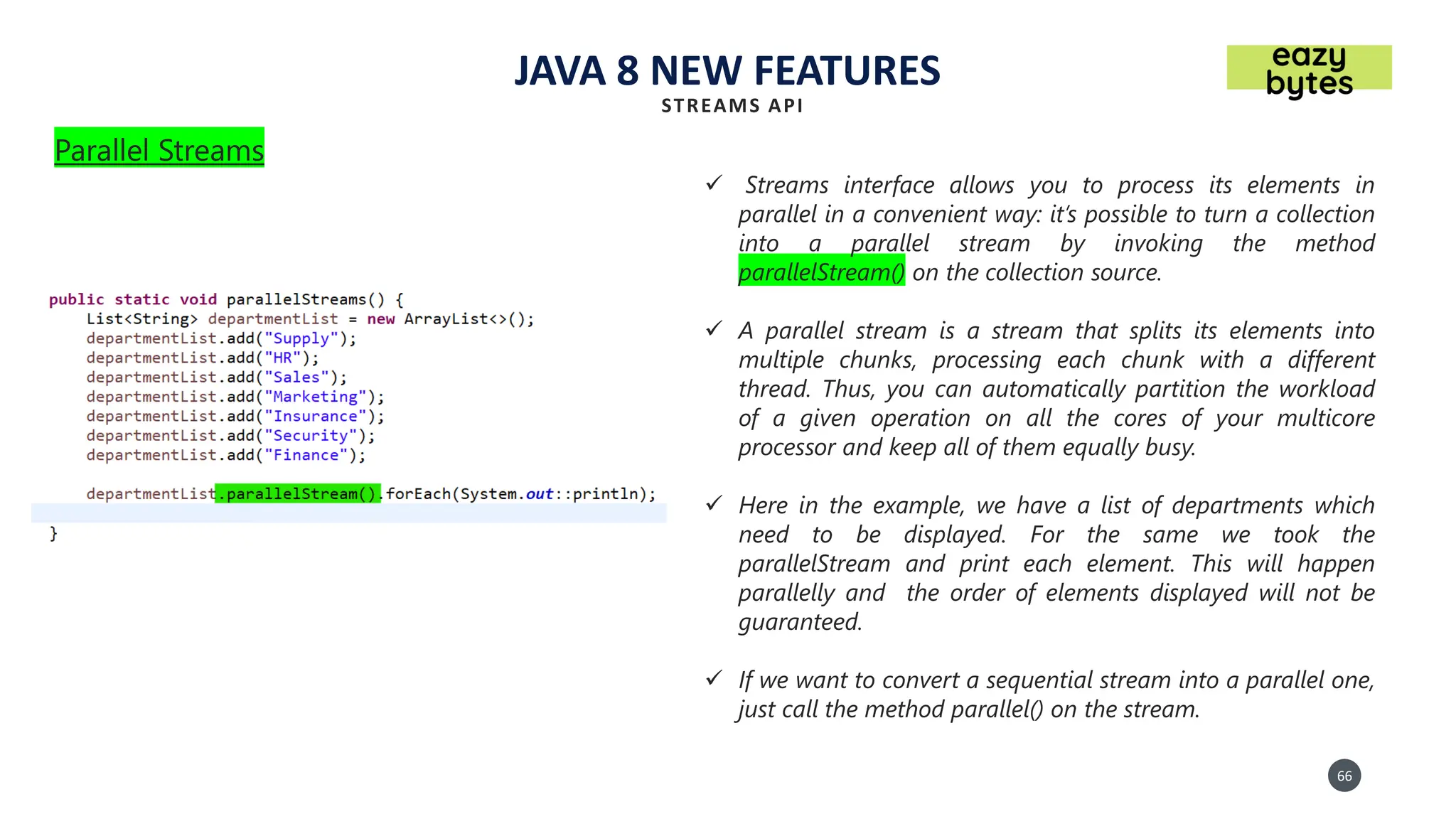
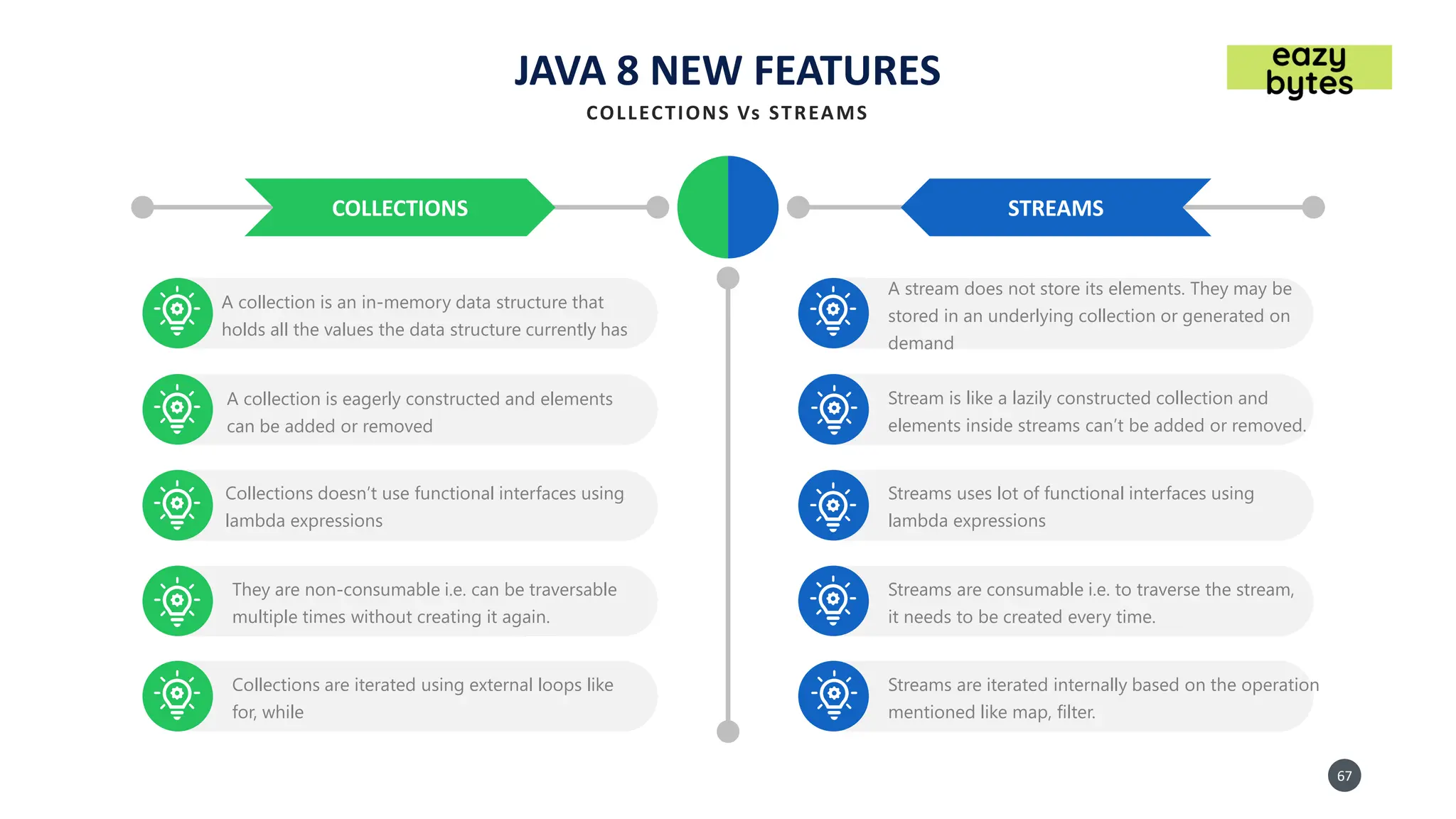
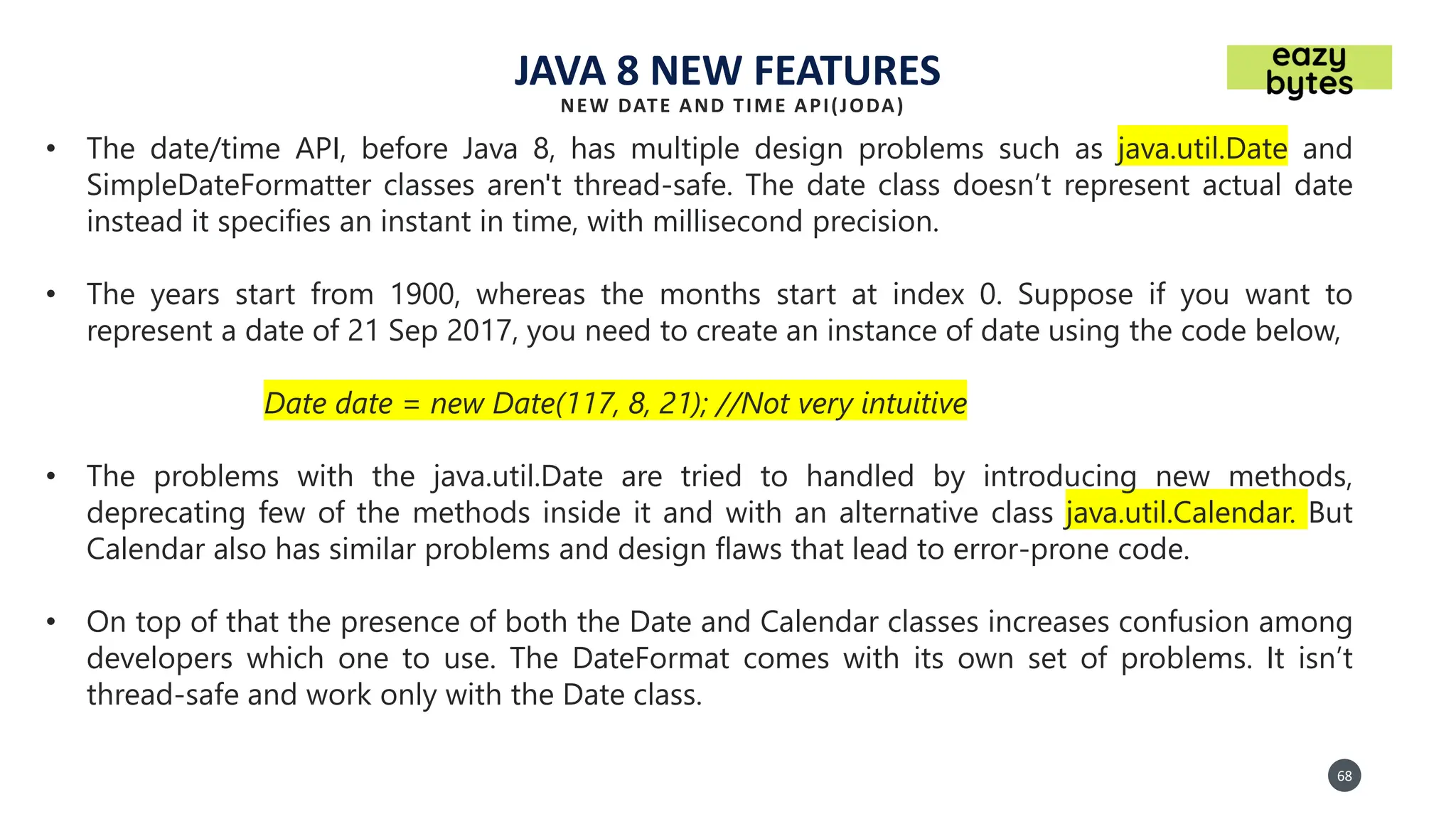
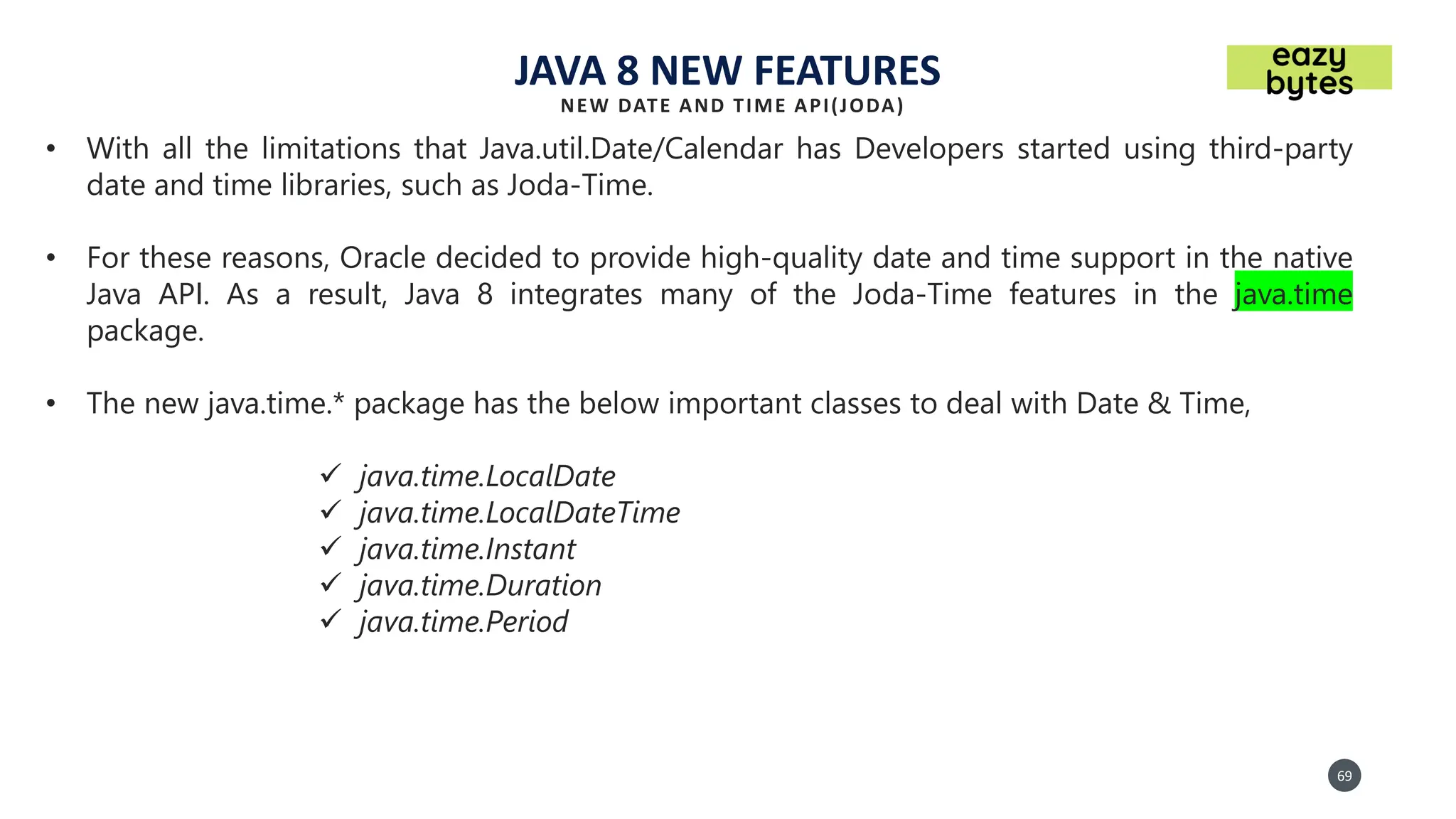
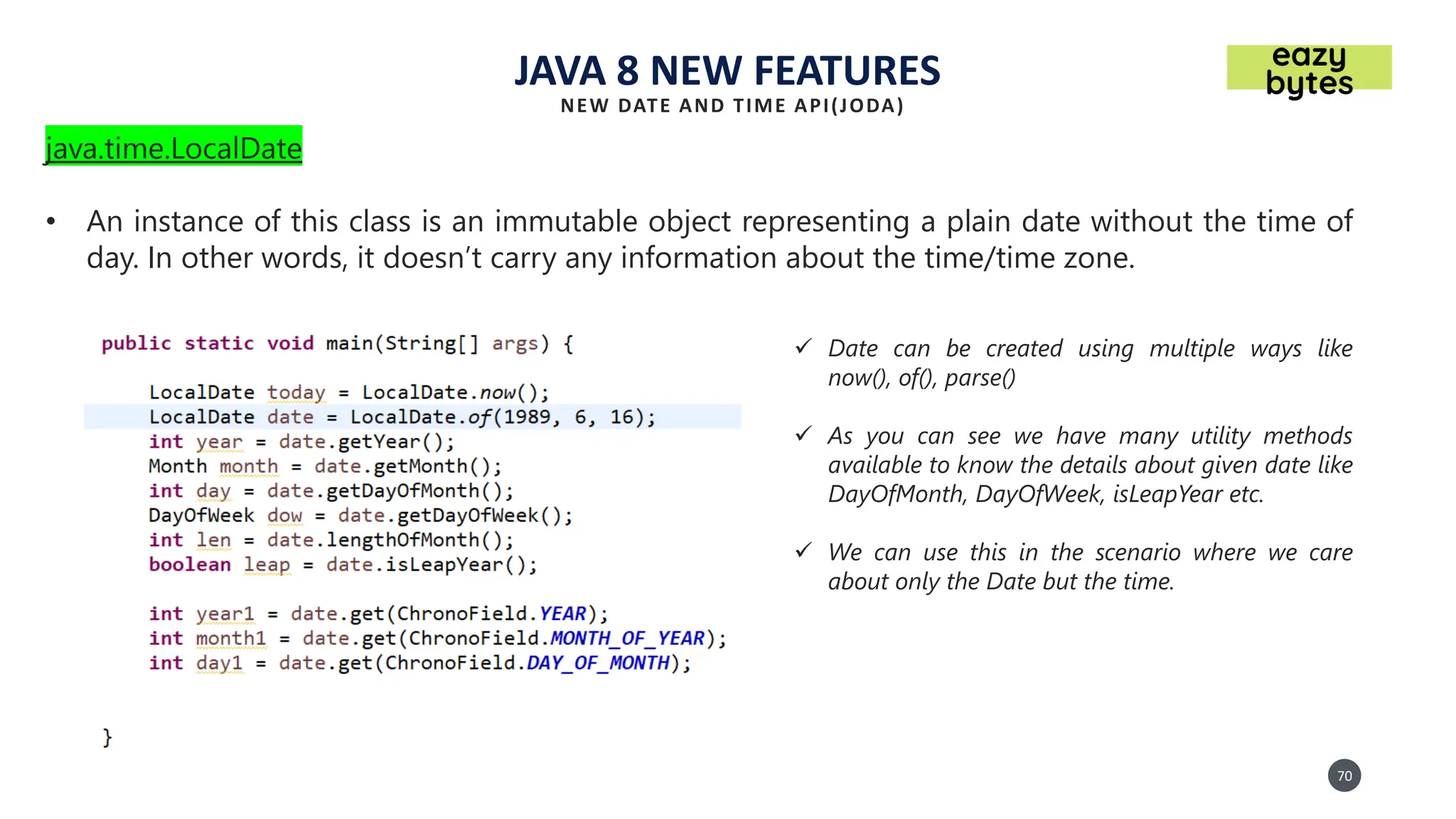
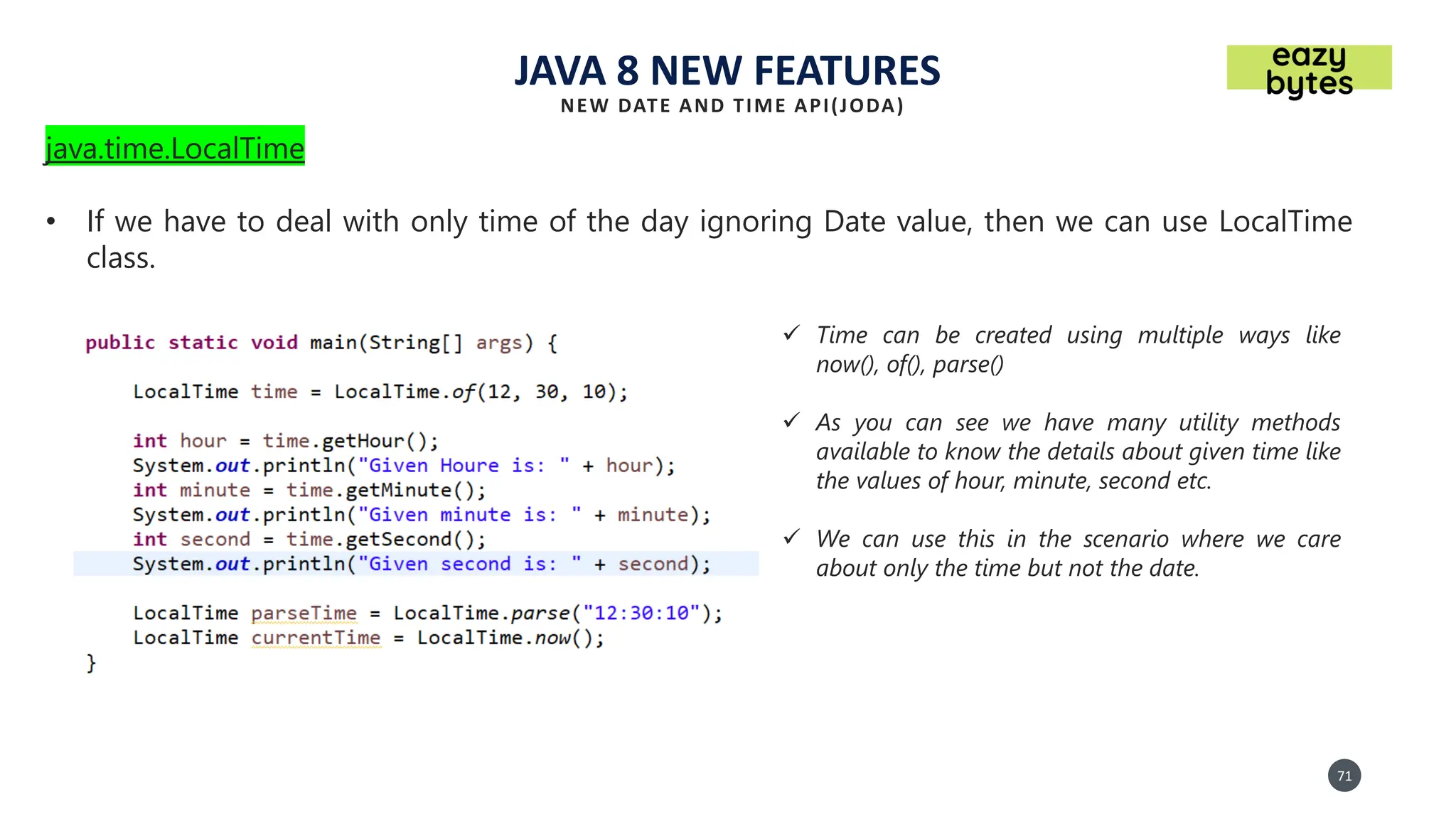
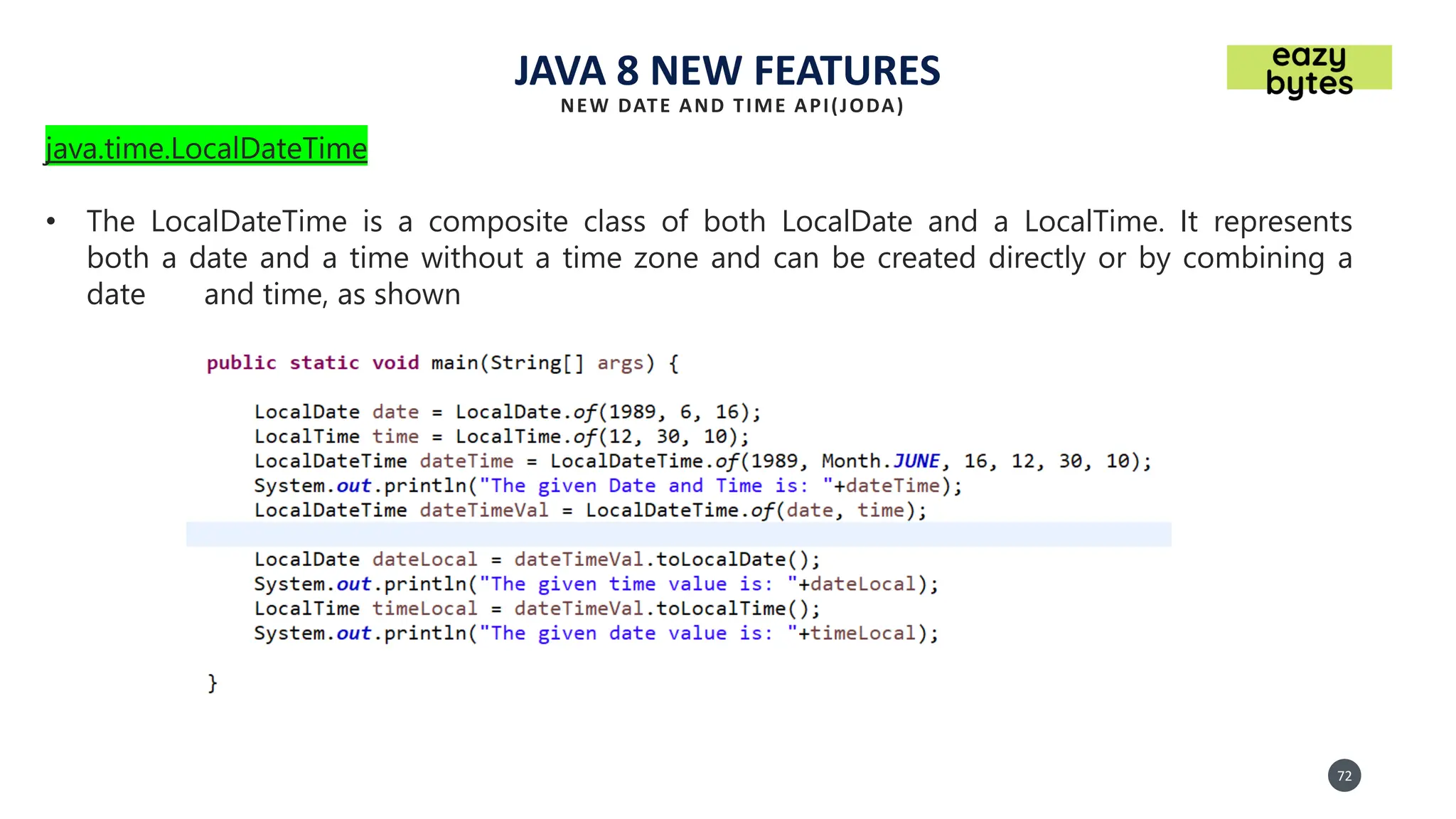
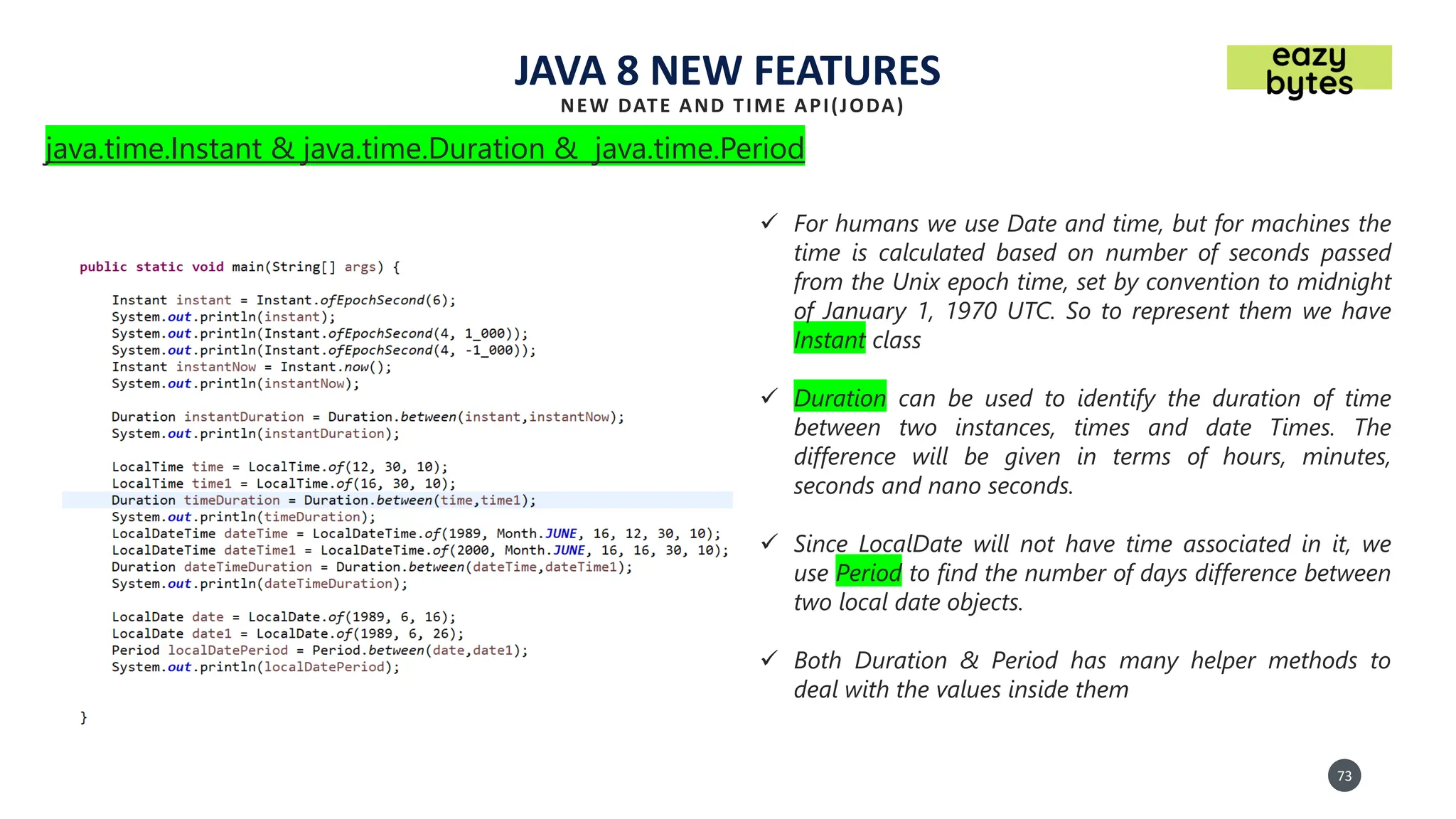
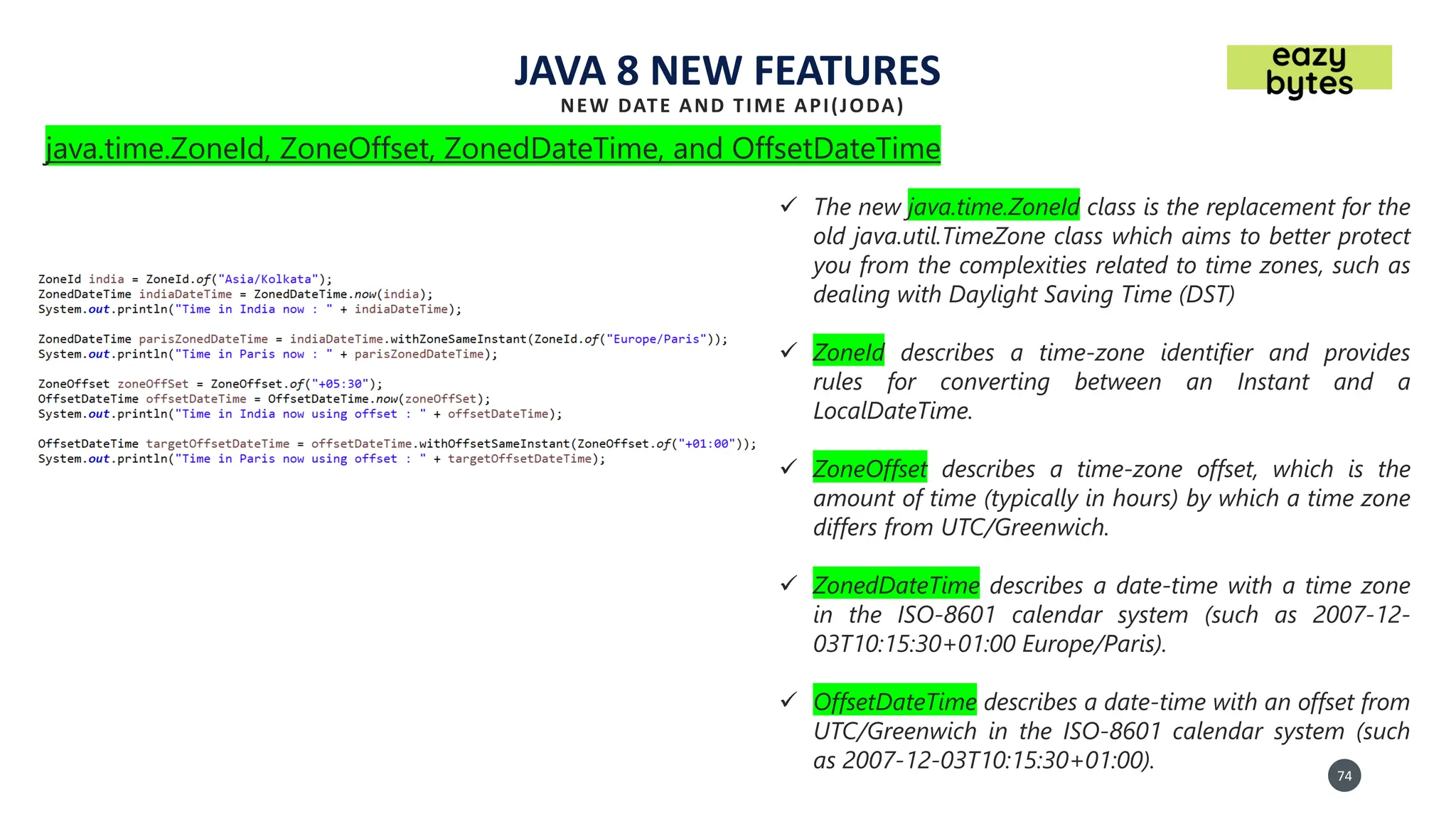
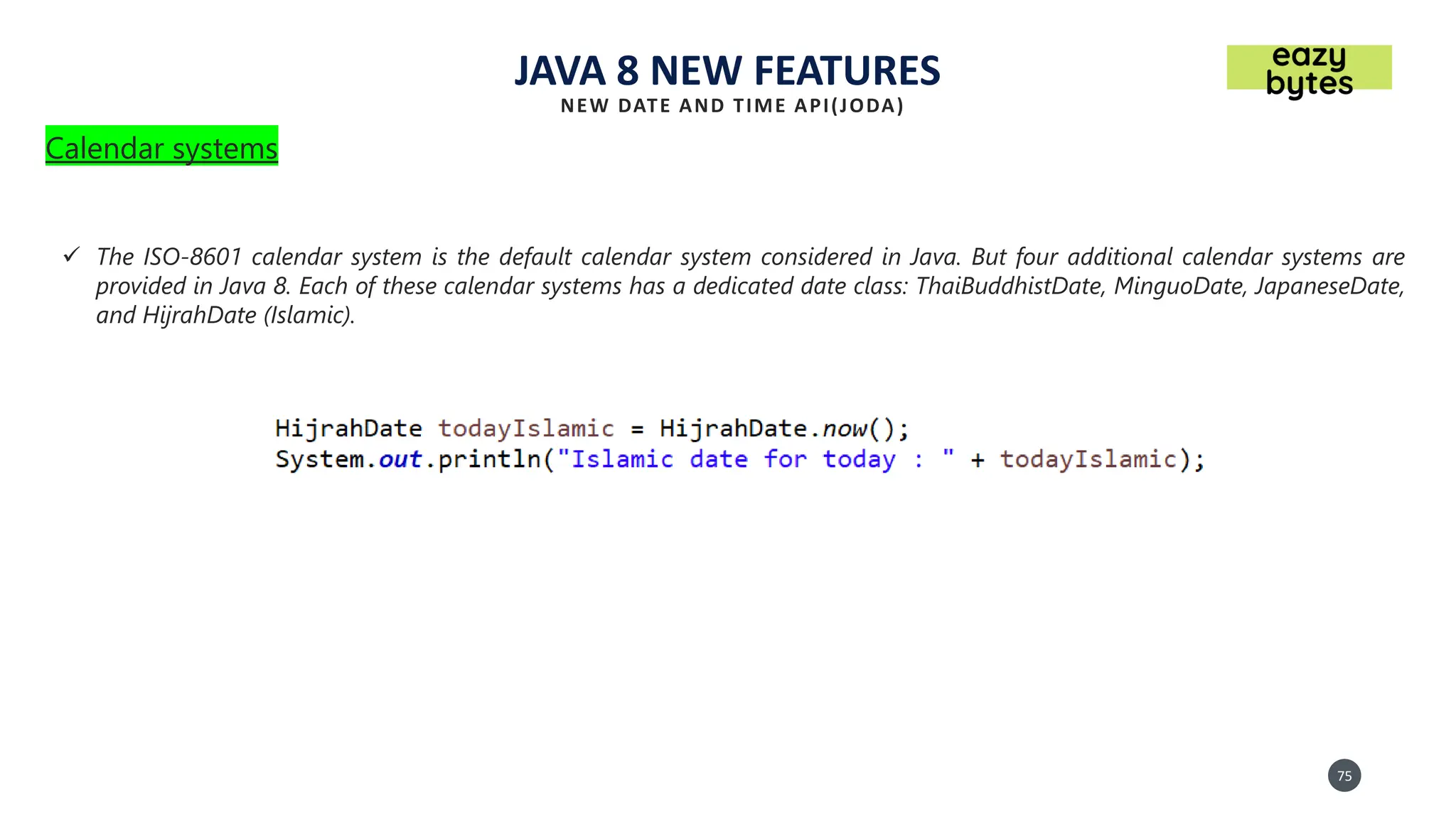



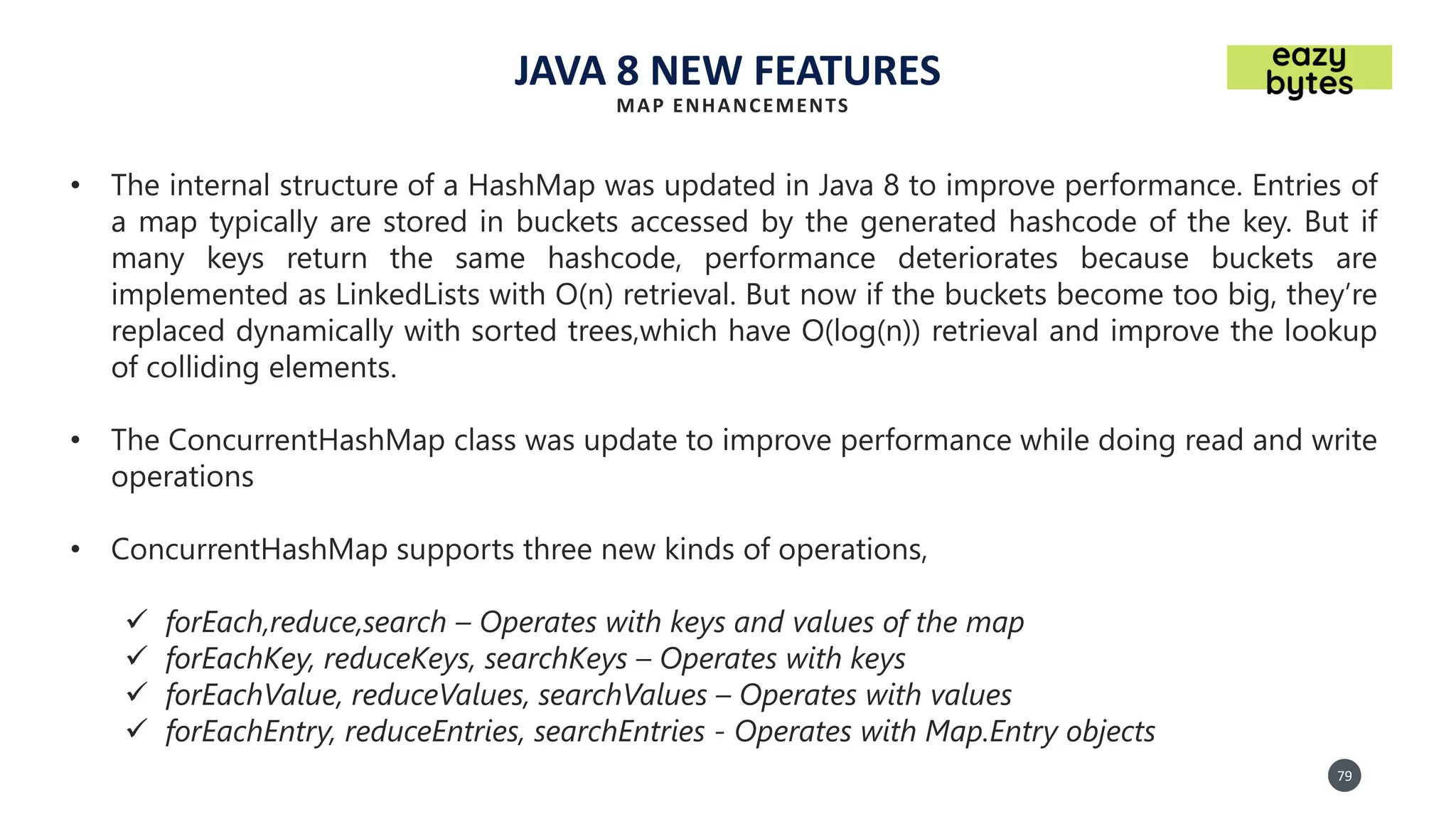
![80
80
JAVA 8 NEW FEATURES
OTHER MISCELLANEOUS UPDATES
• Java 8 team made the most out of the default methods introduced and added several new
methods in the collection interfaces & other classes. Below is the snapshot of the same,
✓ List - > replaceAll(), sort()
✓ Iterator -> forEachRemaining()
✓ Iterable -> forEach(), spliterator()
✓ Collection -> parallelStream(), stream(), removeIf()
✓ Comparator-
>reversed(),thenComparing(),naturalOrder(),reverseOrder(),nullsFirst(),nullsLast()
✓ Arrays -> setAll(),parallelSetAll(),parallelSort(),parallelPrefix()
✓ String -> join()
✓ Math -> [add][subtract][multiply][increment][decrement][negate]Exact, toIntExact,floorMod,
floorDiv, and nextDown
✓ Number -> sum, min, and max static methods in Short, Integer, Long, Float, and Double. Etc.
✓ Boolean -> logicalAnd(), logicalOr(), logicalXor().
✓ Objects -> isNull(), nonNull()](https://image.slidesharecdn.com/java8-newfeatures-231026104942-a528e6a8/75/Java-8-New-Features-pdf-80-2048.jpg)
